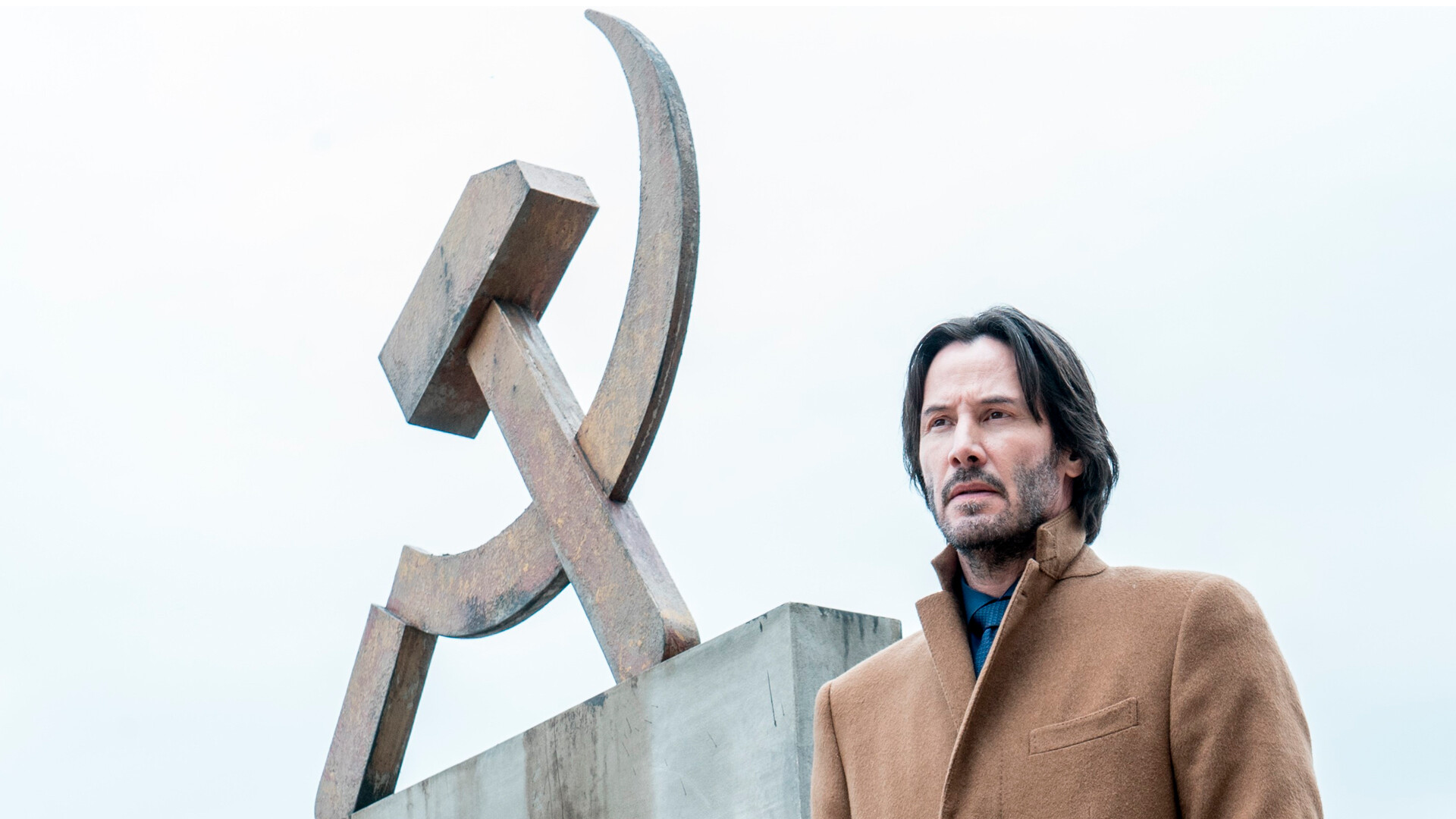

A Hollywood classic and one of the first screen adaptations of Leo Tolstoy’s novel with sound – with the unequaled Greta Garbo, who had already starred as Karenina in the silent movie ‘Love’ (1927). Here, the clash of Karenina’s wish to be loved – her passion towards Vronsky – and Karenina’s motherly love towards her son, Serezha, takes the spotlight. It’s tragic, just like the ending of the movie’s literary inspiration.

Starring Greta Garbo once again, but this time in a comedy by Ernst Lubitsch – ridiculing in good spirit, although not without political jokes, Soviet comrades and the results of the Five-Year-Plan, “admired for 15 years already” by many. Garbo plays an unapproachable Bolshevik lady named Nina Yakushova, sent by the Soviets to Paris to bring back three renegade envoys. But, slowly, even the iron lady mellows to the French capital and its careless, romantic spirit.
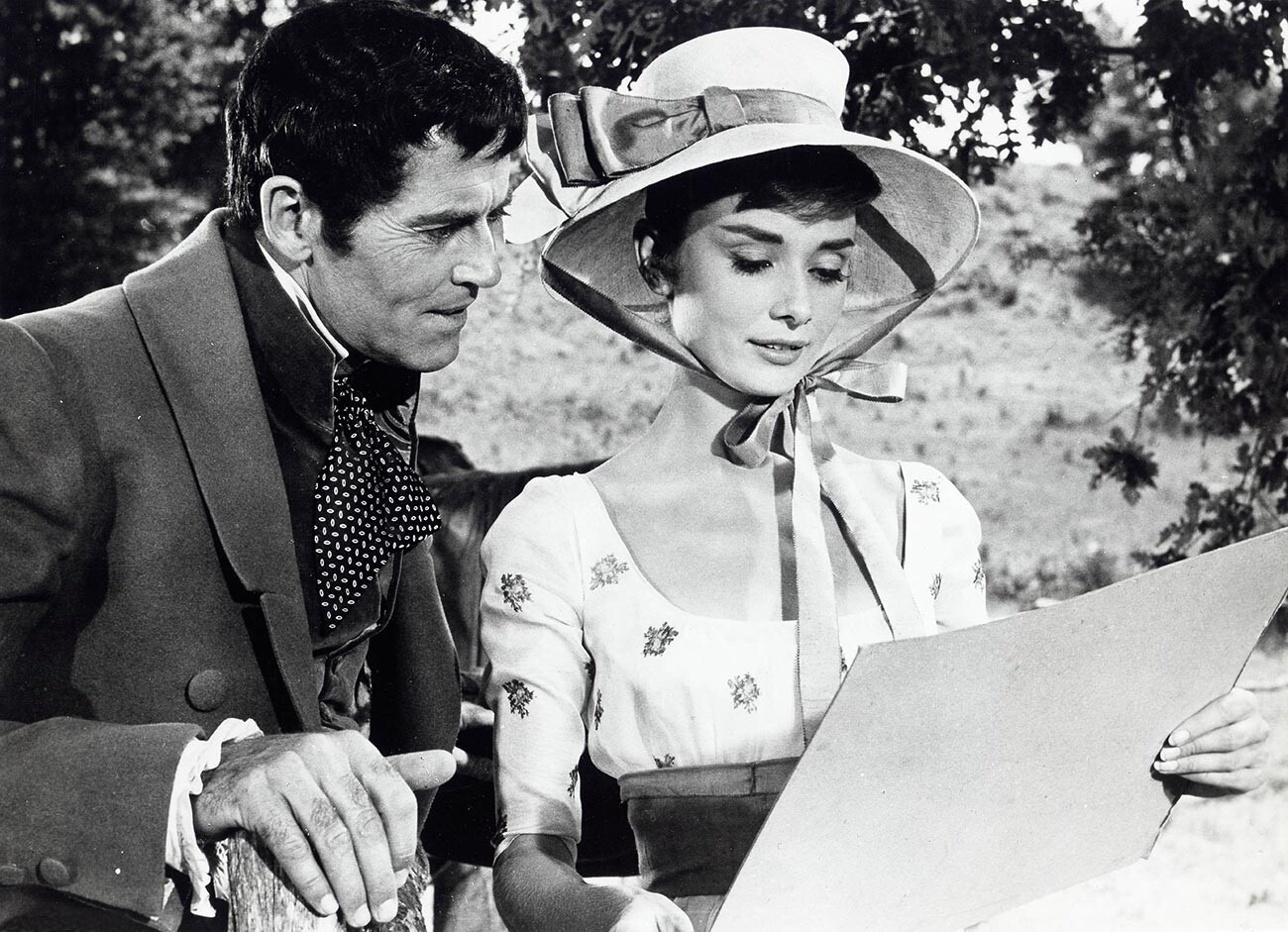
Another screen adaptation of a Leo Tolstoy novel that received mixed reviews both from critics and the audience, with Audrey Hepburn (as Natasha Rostova) and Henry Fonda (who, back then, was already older than Pierre Bezukhov, the character he played). This screen adaptation was criticized for its historically inaccurate costumes, for Hepburn’s unremarkable acting and for songs performed in English instead of Russian. But, it was this movie that inspired Sergei Bondarchuk to direct the largest and the most outstanding screen adaptation of ‘War and Peace’ that received an Oscar for ‘Best Foreign Language Film’.

Ten years prior to when the first screen adaptation of Dostoevsky’s novel appeared in the USSR, Richard Brooks, an American director from a family of Russian emigrants, presented his own version of ‘The Brothers Karamazov’ with the infernal Yul Brynner as Dmitri Karamazov. He became the main character of the story, turned by Brooks, who almost completely discarded the philosophical and religious interpretations of Dostoevsky, into an exciting detective movie, presented at the Cannes Film Festival. It was in the same year when the Soviet movie ‘The Cranes Are Flying’ (1957) won the Palme d’Or.
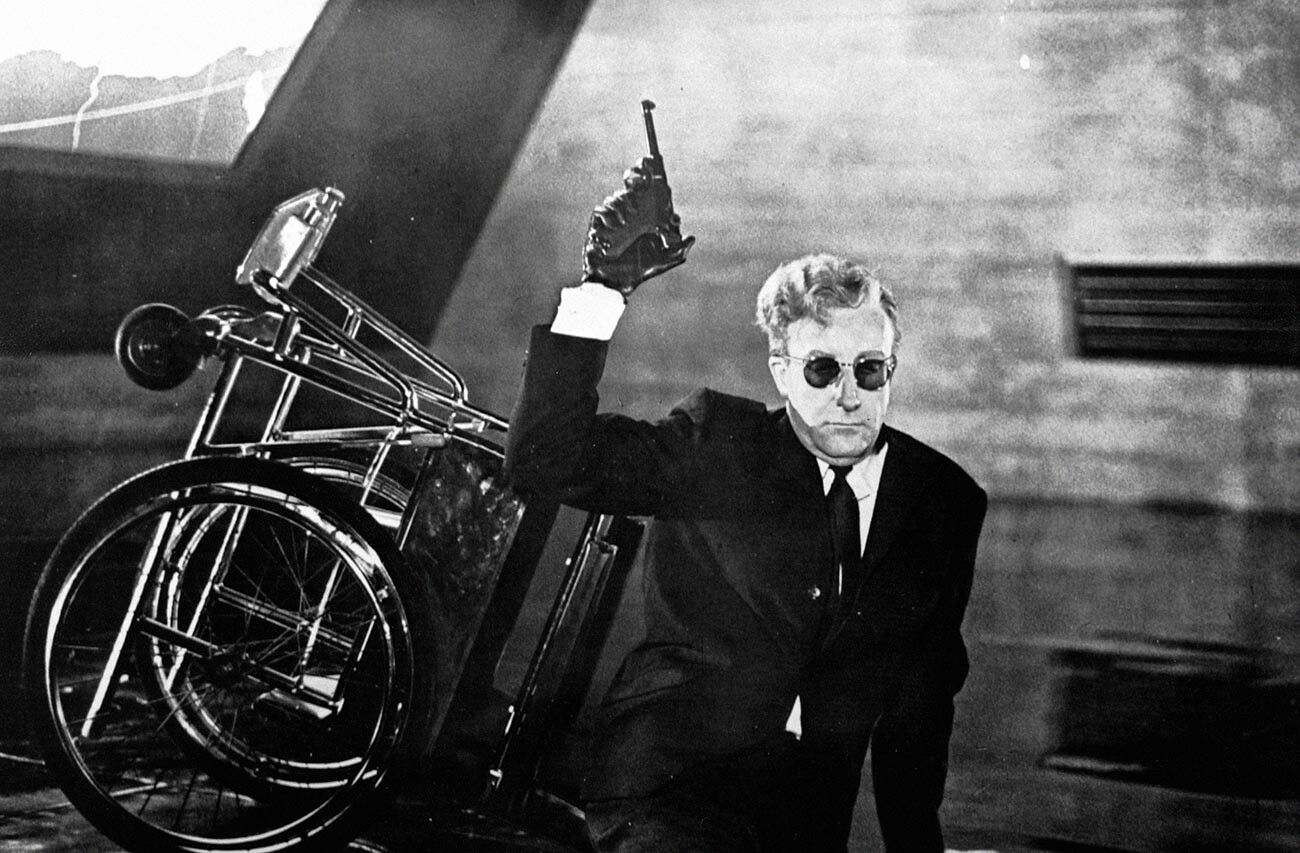
Stanley Kubrick’s absurdist comedy can be called a true anti-war anthem. The movie classic clashes nuclear superpowers that perhaps either try to begin or end a war. A random American general activates the secret ‘Plan R’ and sends off bombers armed with nuclear weapons; however, it turns out that the Soviets have a machine that’s ready to retaliate. Ambassadors and state leaders are in shock, Dr. Strangelove rubs his uncontrollable hand that’s constantly trying to do the Nazi salute, American generals with their customary chewing gum are trying to find a common language with the Soviet generals, who, surprisingly, drink water and not vodka – although “on no account will a commie ever drink water and not without good reason”.
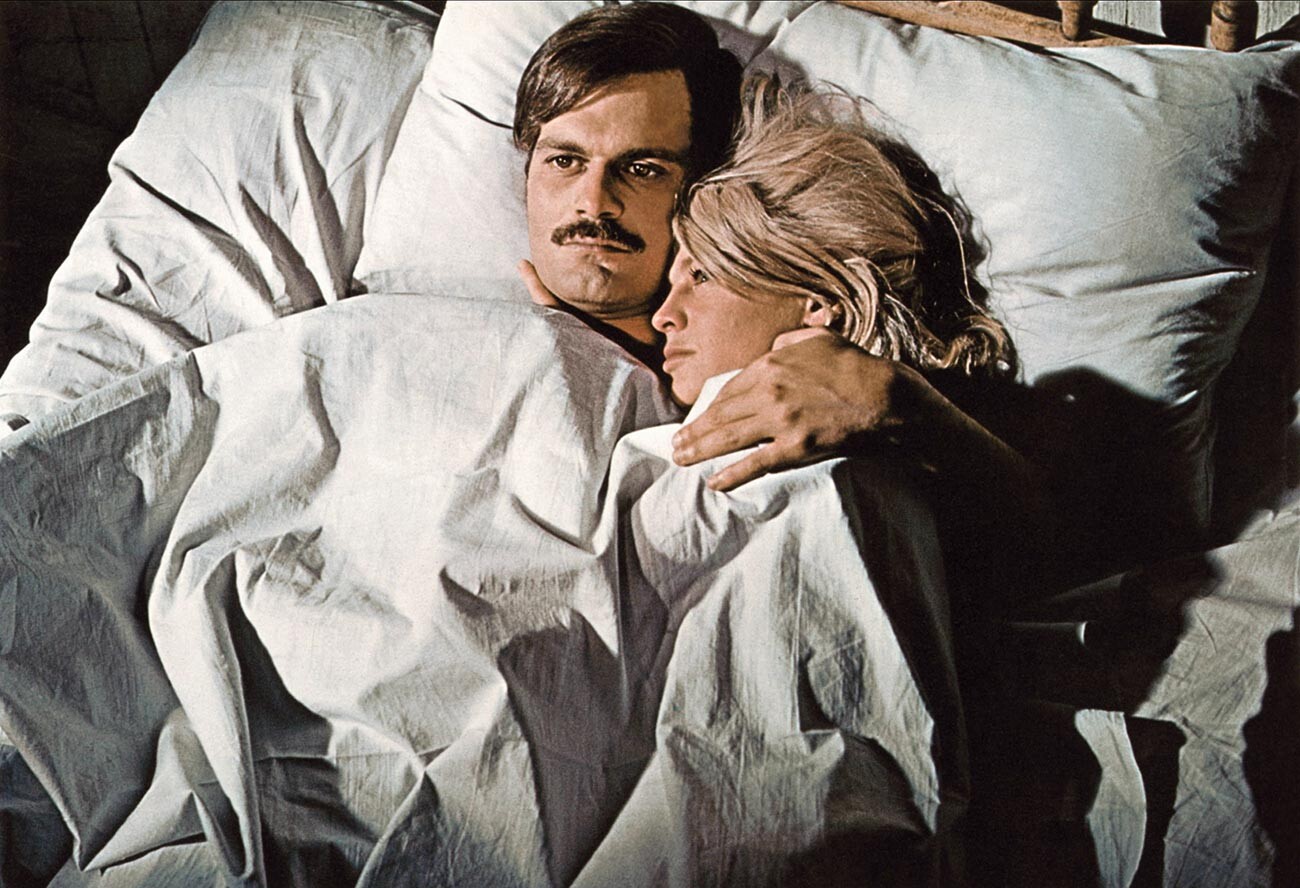
One of the main American melodramas of the 20th century and an incredibly successful movie, it was shot on the basis of the most popular in the West, but for a long while prohibited in the USSR, book by Boris Pasternak. This movie by David Lean, of course, was criticized for its simplistic representation of the novel and a primitive depiction of the revolution shown on screen. But, it remains in the history of cinema as a great melodrama about the perils of love of Yuri Zhivago; after playing this role, actor Omar Sharif became a true international movie star.
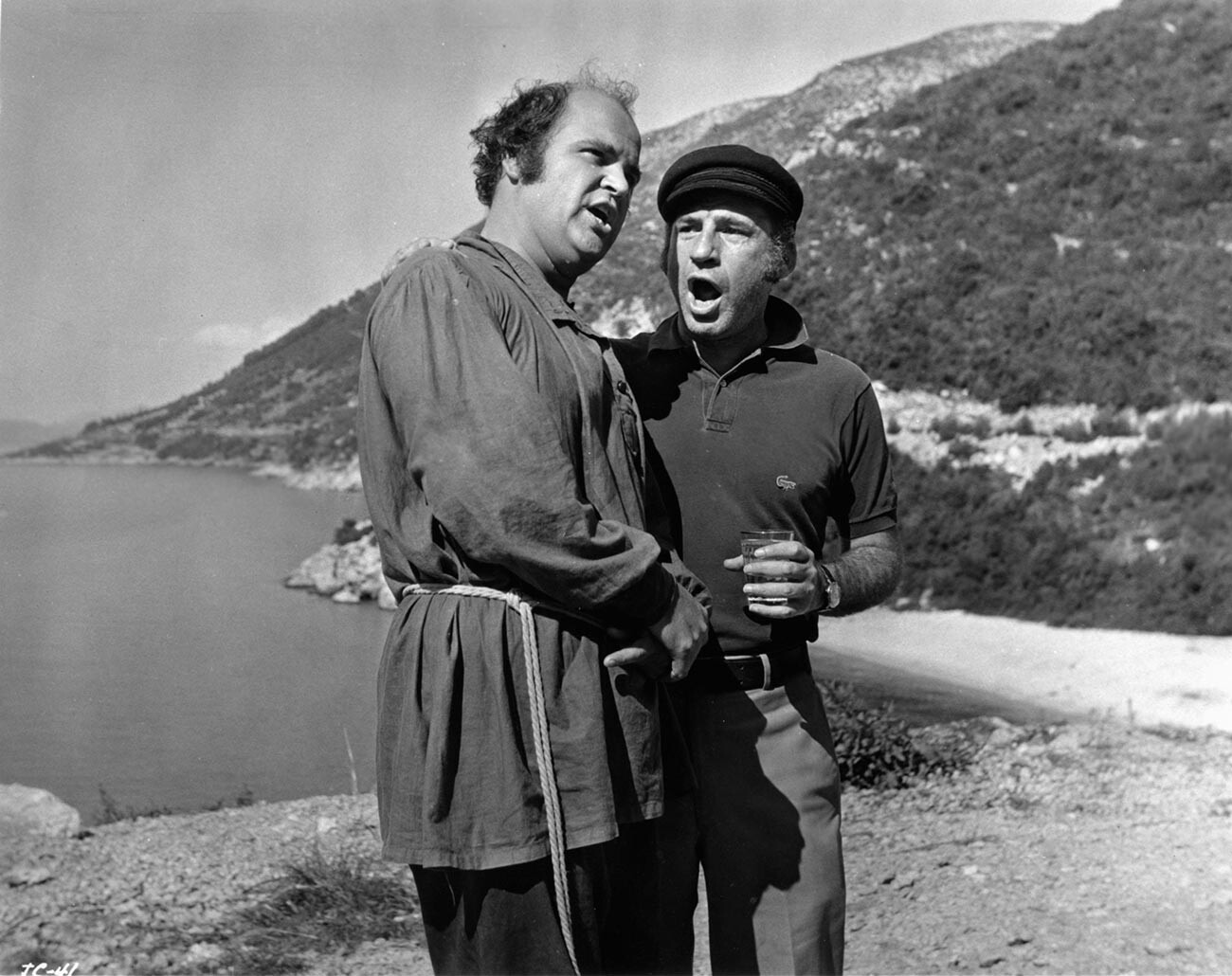
A master of comedy and buffoonery, Mel Brooks, didn’t shy away from putting Ilf and Petrov’s novel about the adventures of Ostap Bender on screen, filled with jokes and jests that, one would think, would only be understood in Russia. For the movie, Brooks honestly removed almost all minor characters and focused on a hooligan comedy about swindlers in pursuit of treasure. Snowy Siberia, paranoid references to Dostoevsky and a dashing song titled ‘Hope For The Best – Expect The Worst’, written by Brooks himself and based on a Slavic adage, are all included.
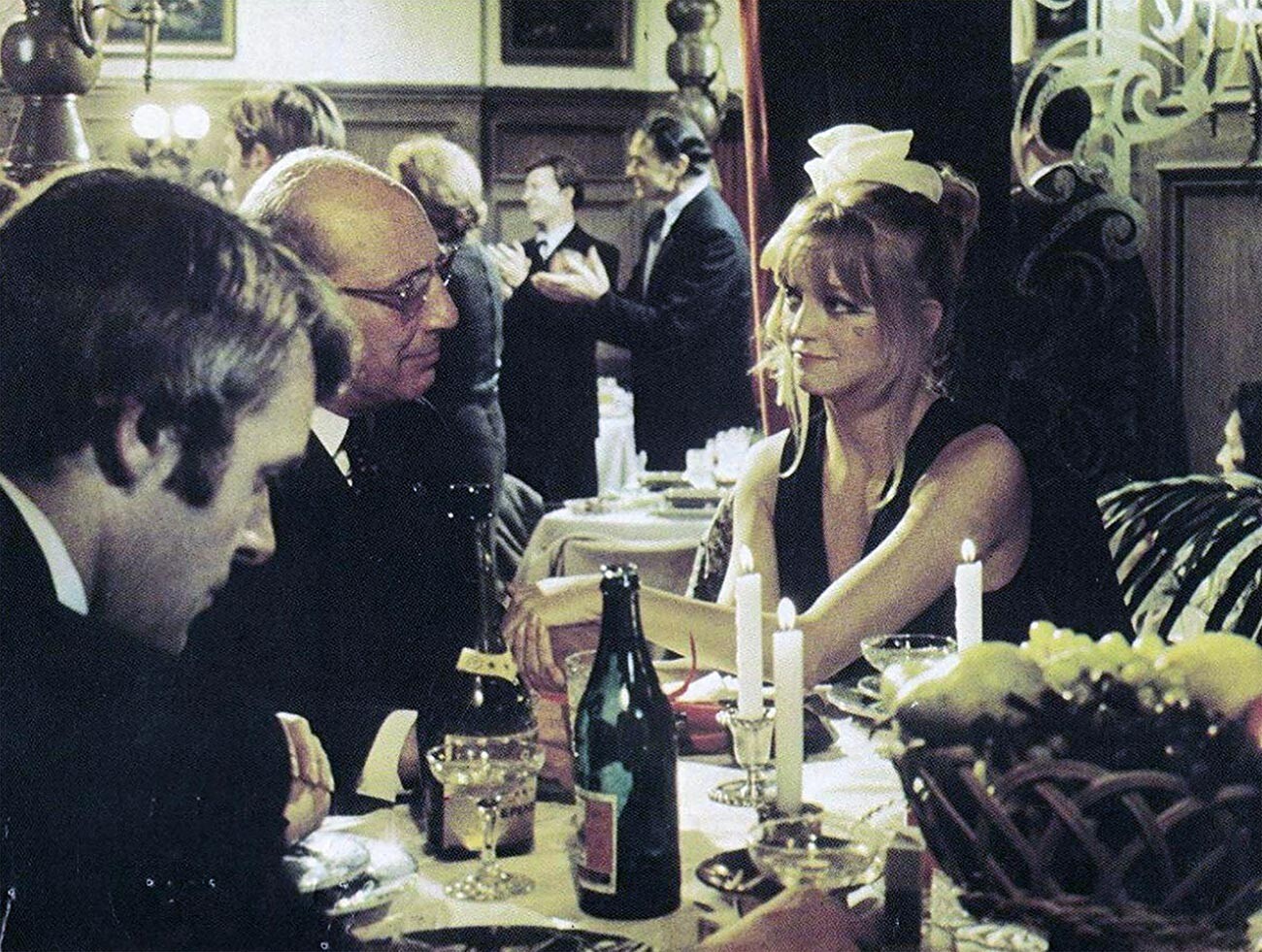
An unpretentious melodrama about the love of an American journalist and a romantic Soviet ballerina with the patriotic name Oktyabrina, the movie had a lot of cliches, characteristic of American cinema during the Cold War. For that, it was criticized in the West - as well as because it came out during the period when Nixon was still trying to improve relations with the USSR. Nevertheless, the movie was remembered for the charming work of Anthony Hopkins, who starred as fartsovschik (the one who does fartsa; an illegal re-seller) Kostya.
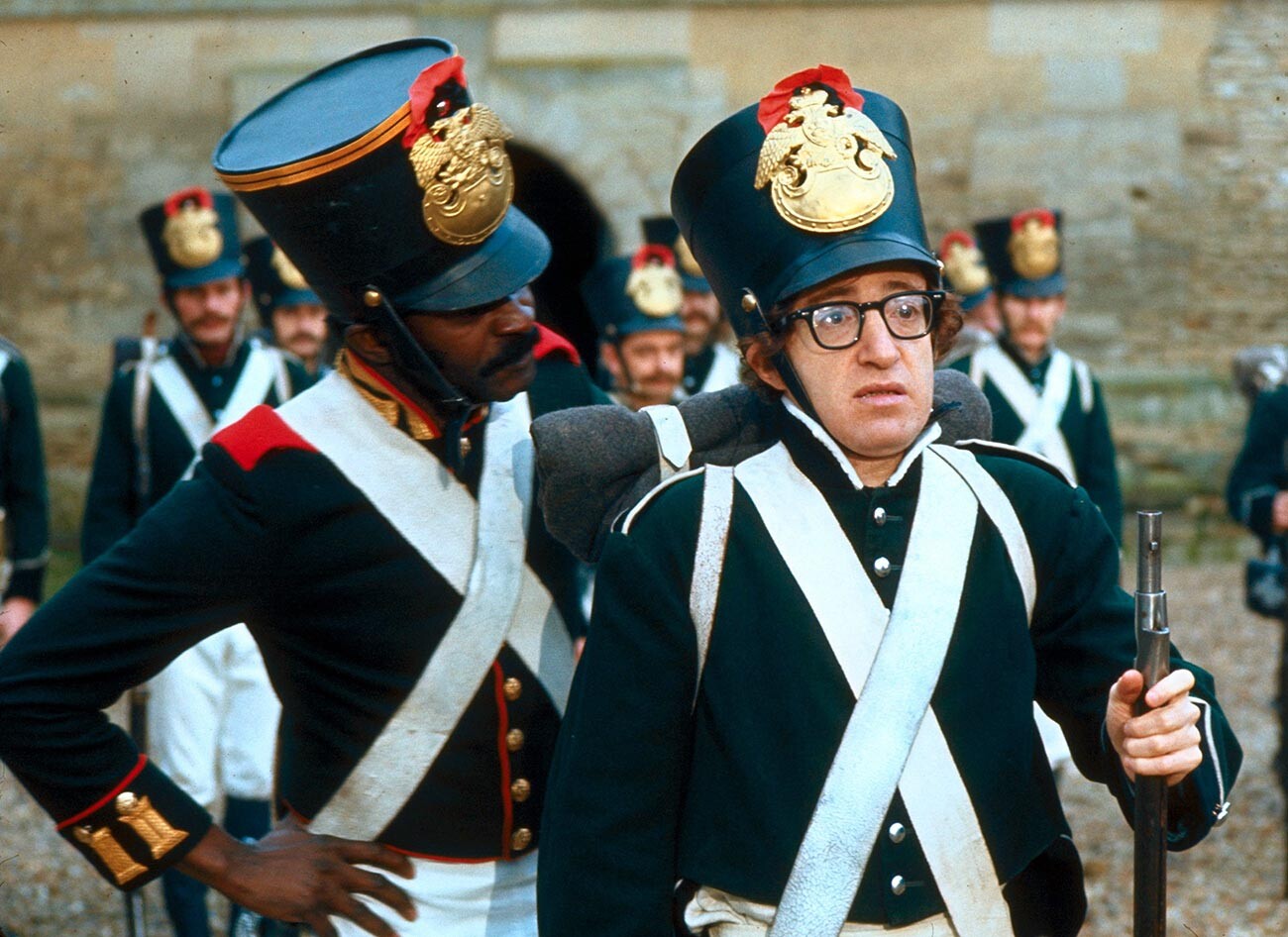
The best parody of the Russian classic is directed by Woody Allen who, in almost all his works, hints at Chekhov, Tolstoy or Dostoevsky. Allen here plays the main role himself – Boris Dmitrievich Grushenko, who awaits the death penalty and remembers his childhood, his adolescence, his youth and, of course, his family. And he also discusses the meaning of life, God and death – like in classic Russian literature.
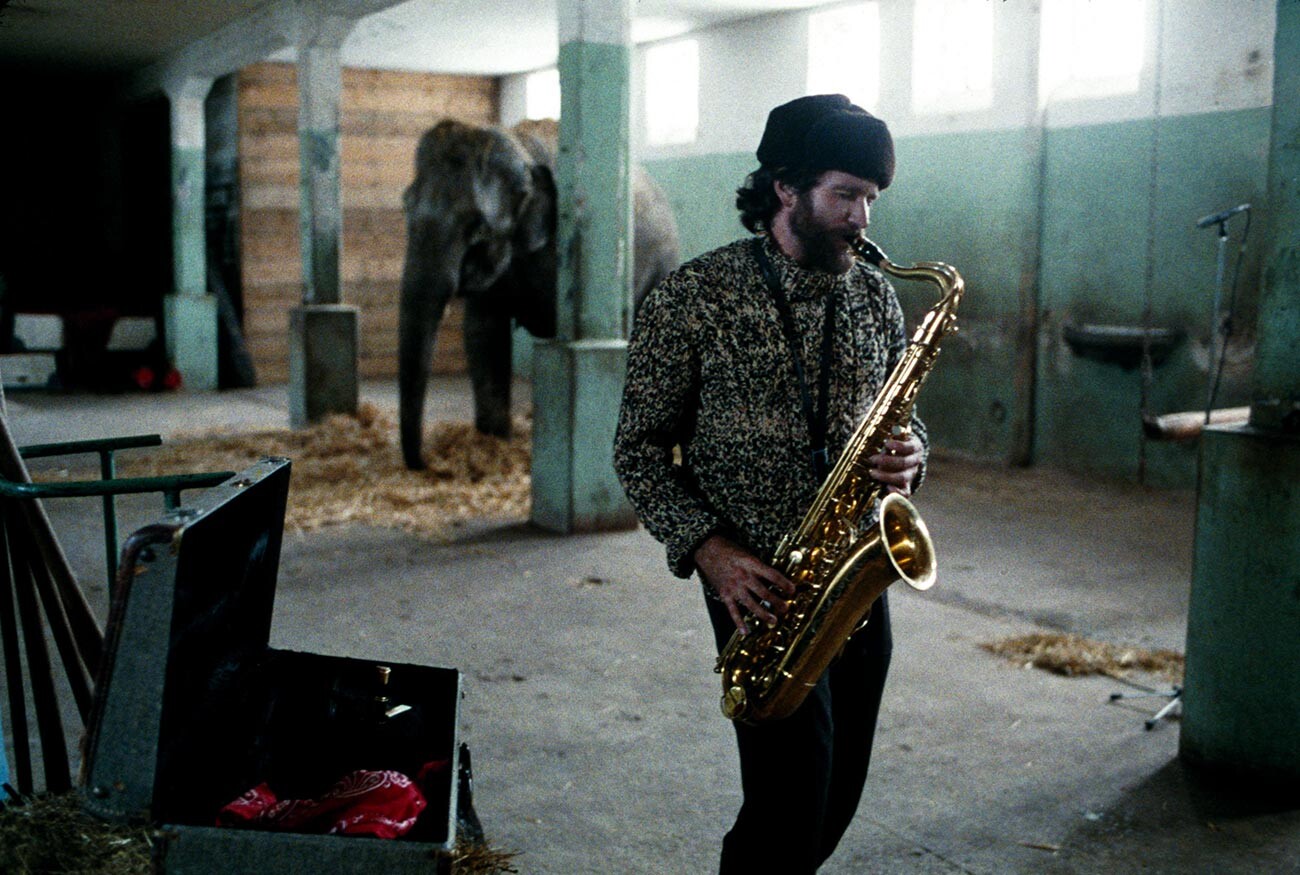
A grim fairy tale about a confused Soviet intellectual played by Robin Williams. He works at a Moscow circus, lives in a modest Soviet apartment with his large family and stands in giant waiting lines to get essentials. Then, he gets the chance to go to New York to perform, where he dramatically defects in search of a better life and, thanks to his American acquaintances that he met by chance, he finds his little happiness and, most importantly – freedom.
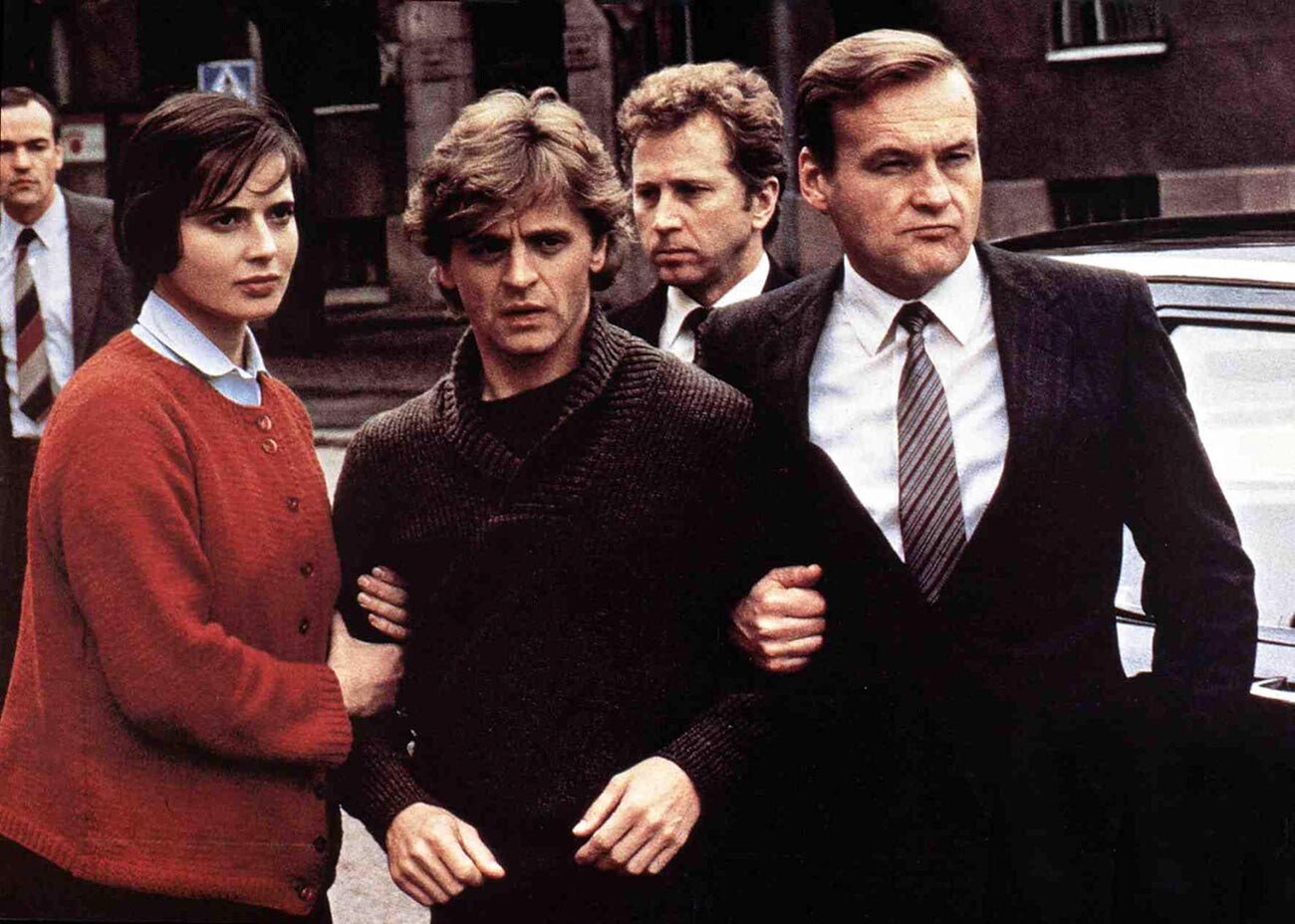
Mikhail Baryshnikov, famous among ballet fans around the world, practically played himself in this movie – a dancer named Nikolai Rodchenko who fled from the USSR. In the movie, however, a more cruel fate awaits him: after his escape, he simply gets stuck touring in different countries. But, one day, his plane crashes in Siberia. And Rodchenko is forced to return to his home country under the strict supervision of the KGB.
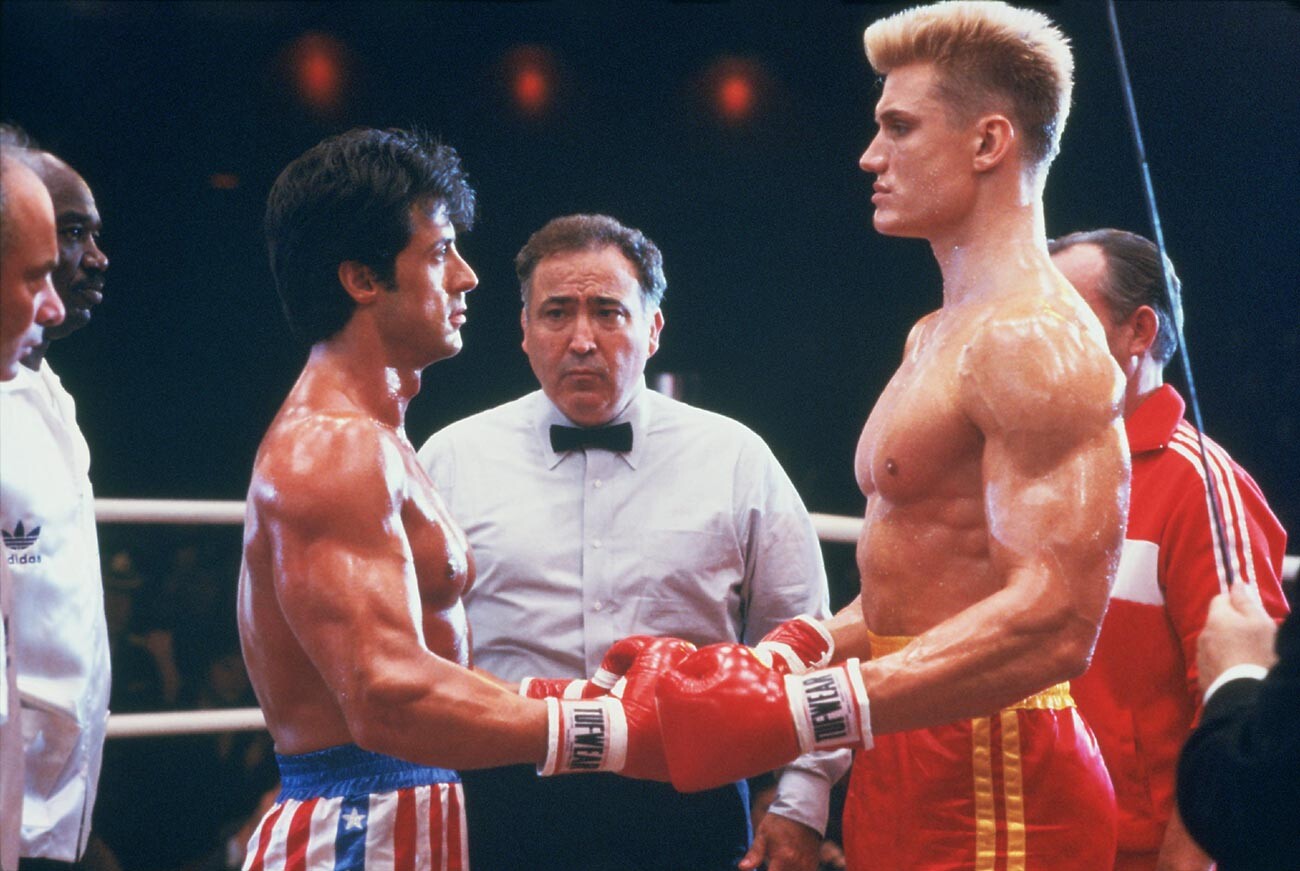
This is the most successful movie of the franchise with Sylvester Stallone, where he battles Soviet officer Ivan Drago (played by Dolph Lundgren). Despite its box office success, the movie received negative reviews from critics. One of the reasons was the grim image of Russians who, at the end, begin to experience emotions and with all their hearts cheer for Rocky Balboa, who triumphantly rises from his knees.
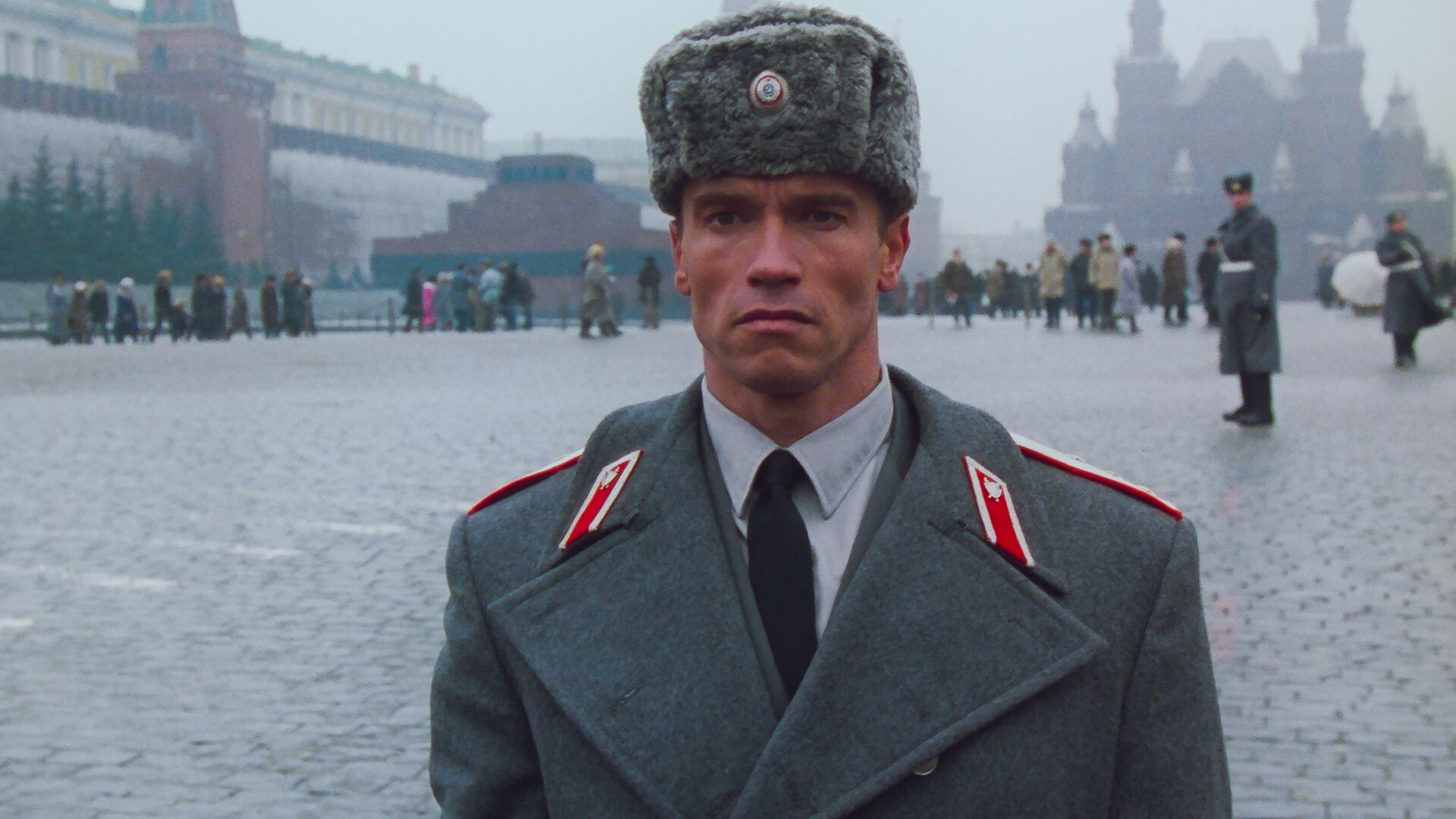
As one of the first Hollywood movies where the Soviets were not portrayed in a negative light, the action involves Arnold Schwarzenegger playing a Soviet police officer who is chasing Russian criminals heading to the U.S. This was the time of perestroika, which now seems a time of unbelievably warm East-West relations. Nevertheless, at that time, filmmakers still could not get permission to shoot on the Red Square, hence they pretended to be making a home video with Schwarzenegger in police uniform.
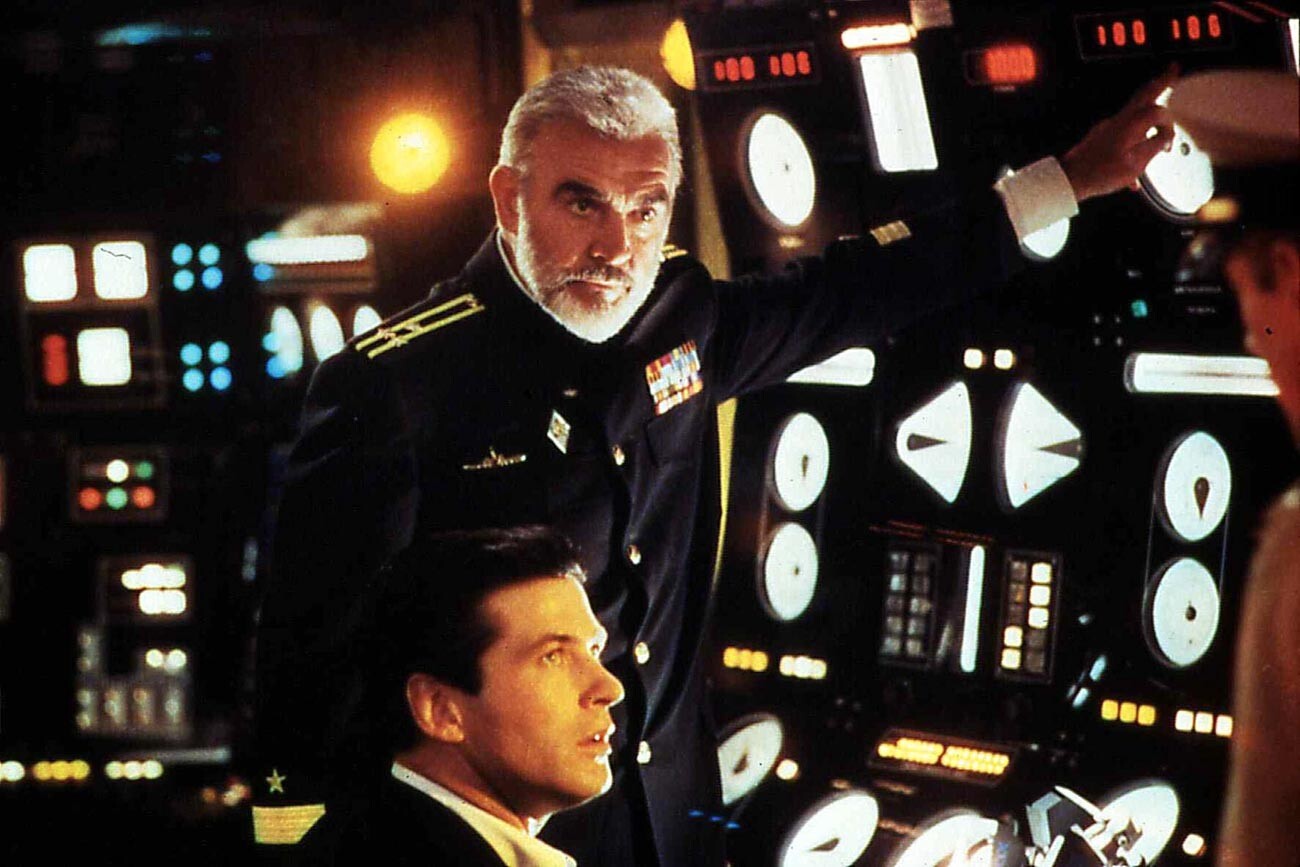
The first story about a fictional CIA analyst, Jack Ryan (played by Alec Baldwin), written by author Tom Clancy, seemed to have been released a little late (Clancy’s novel was published back in 1984). Even Sean Connery, who played the Soviet captain-deserter Marko Ramius, at first, declined the role, since he believed that the Cold War was already over. But, the creators of the movie persuaded him that it was a homage to history of sorts. Connery – as Baldwin, too – played their roles brilliantly. But, that’s not what is surprising to us in the movie. It’s that the only crewman of the ‘Red October’ submarine who knew about the treacherous plans of Ramius was a political officer with the last name Putin. He was played by Peter Firth.
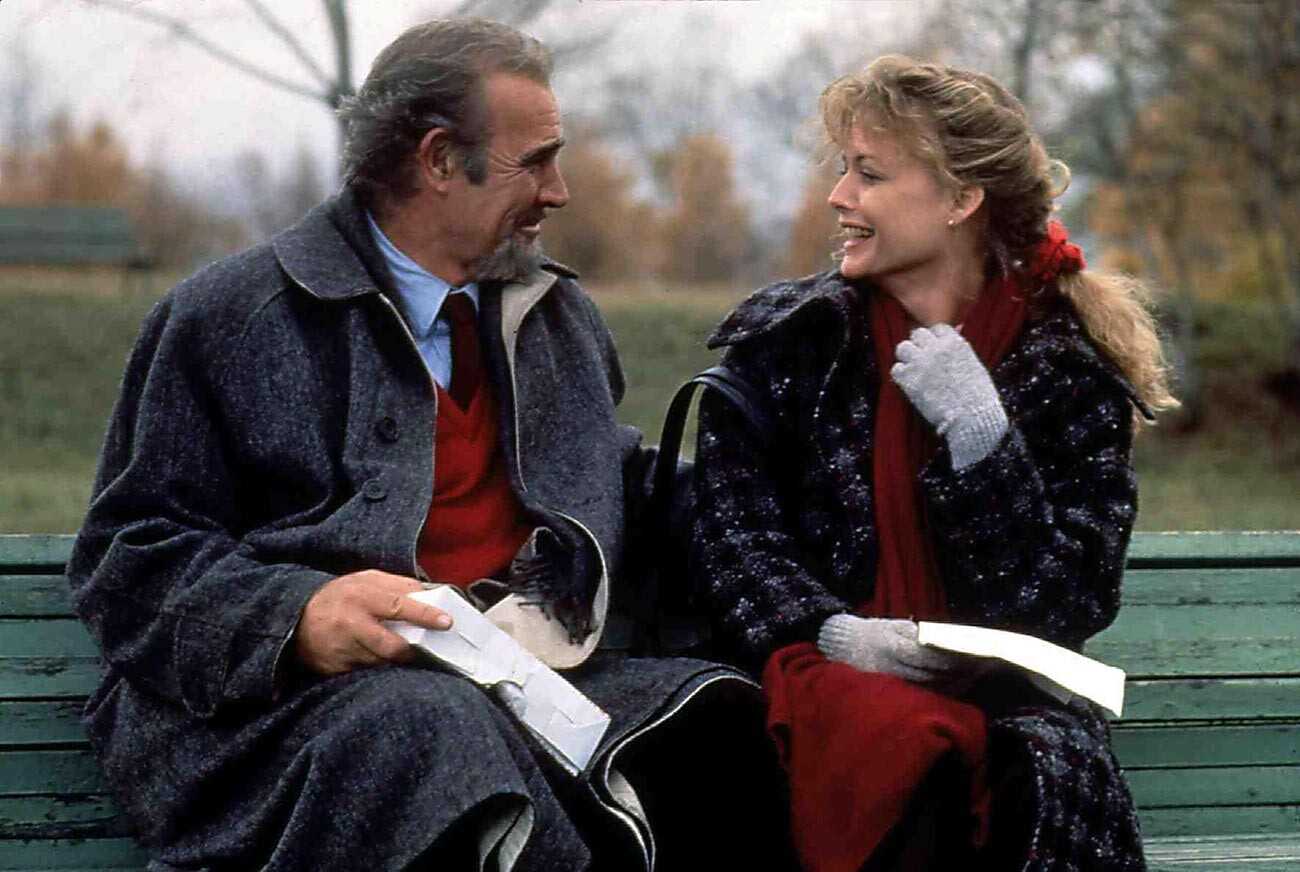
Producers of ‘The Russia House’, a spy movie that starred Sean Connery and Michelle Pfeiffer, did not have problems shooting it in Moscow and Leningrad. The movie soon followed ‘Red Heat’ and it was the second and last major Hollywood film shot in the USSR. This was also Sean Connery’s second visit to the Soviet Union. Twenty one years earlier, he played in ‘The Red Tent’ (1969), the last movie by famous Soviet director Mikhail Kalatozov.

The last - and seventh - part of the American comedy police franchise ends with this episode in Russia. It was filmed in Fall 1993, when an armed uprising broke out in Moscow, with troops loyal to President Boris Yeltsin shelling the Russian Federation Government house. These events forced the film’s shooting to be cut short. By the way, one can see the damaged parliament building in the movie.
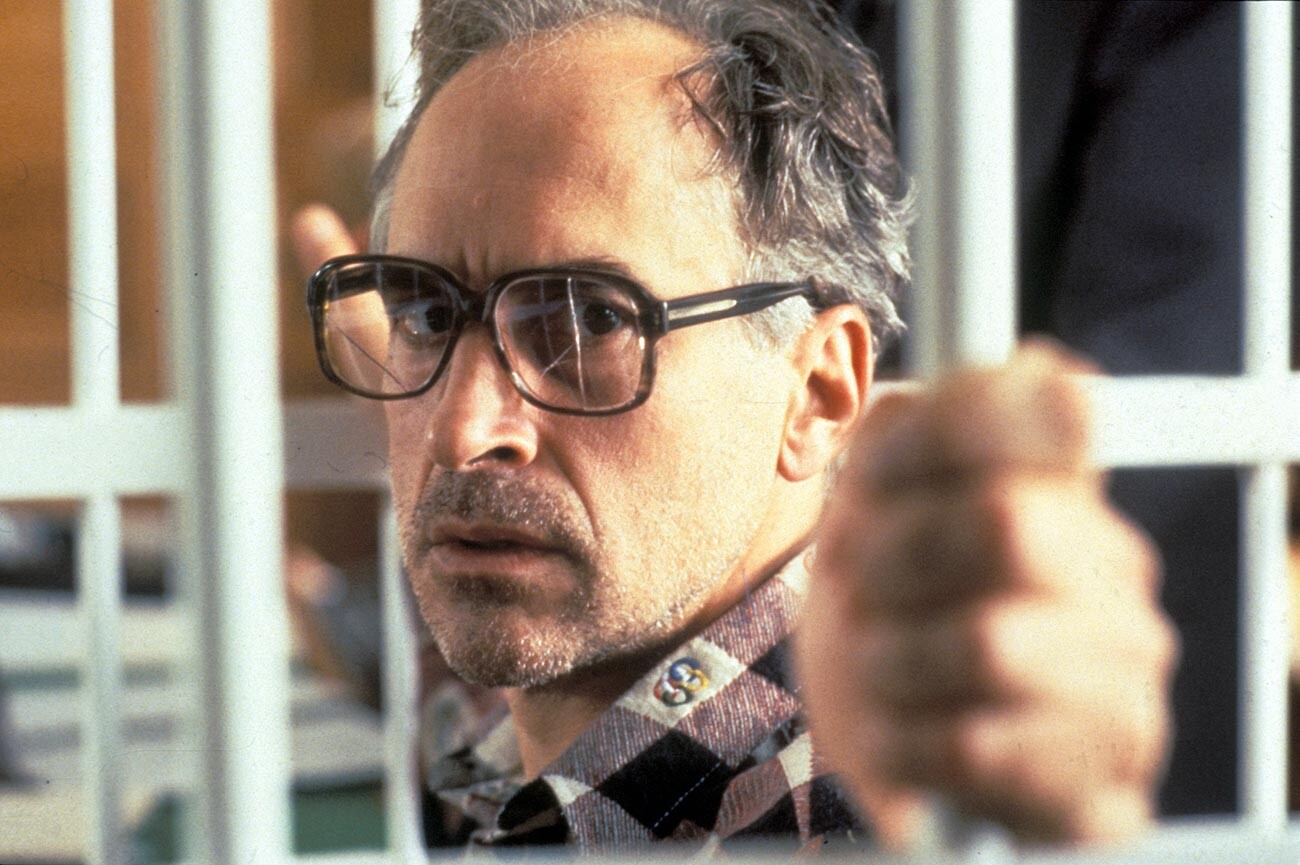
A rare example of an American movie not about the Cold War, but other – criminal – realities of the Soviet Union that, for a long time, didn’t recognize the existence of sex or sex crimes. Until Andrei Chikatilo happened, who became a prototype for many maniacs, even in global cinema. ‘Citizen X’ explores his phenomenon – not only from the standpoint of personality, but also the social and political system of that time.

The first movie in the Bond franchise with Pierce Brosnan as 007 has a remarkable chase scene along the streets of St. Petersburg. Bond, driving a stolen T-55 tank, is after his main enemy who ends up in an armored train.
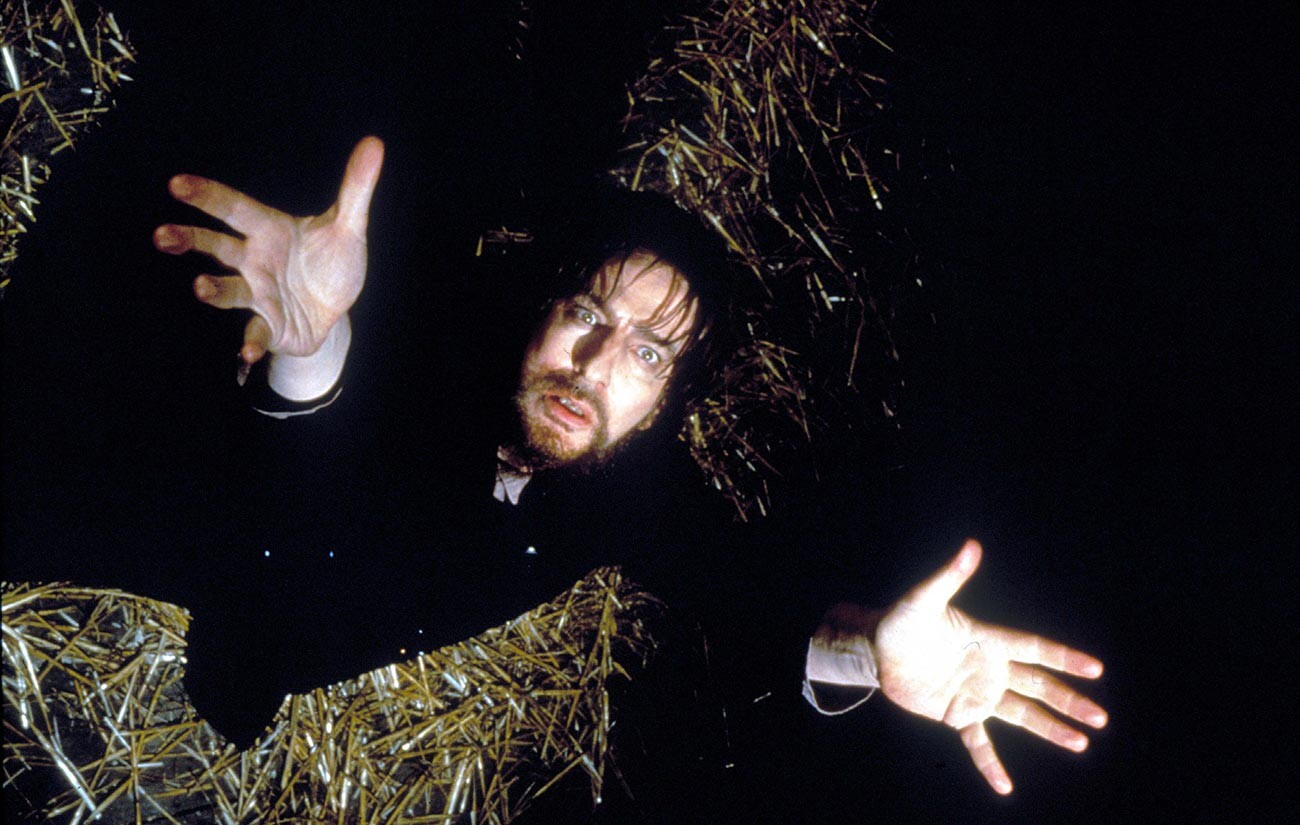
Alan Rickman as Grigori Rasputin walks the entire path from becoming a healer in Siberia to becoming the savior of Alexei, the heir to the throne, sick with hemophilia, and the best friend of Empress Alexandra Feodorovna. This path led to the madness and death of Rasputin, which is quite consistent with Russian history books. Rickman is not the only highlight of the movie, but also Ian McKellen as Nicholas II.
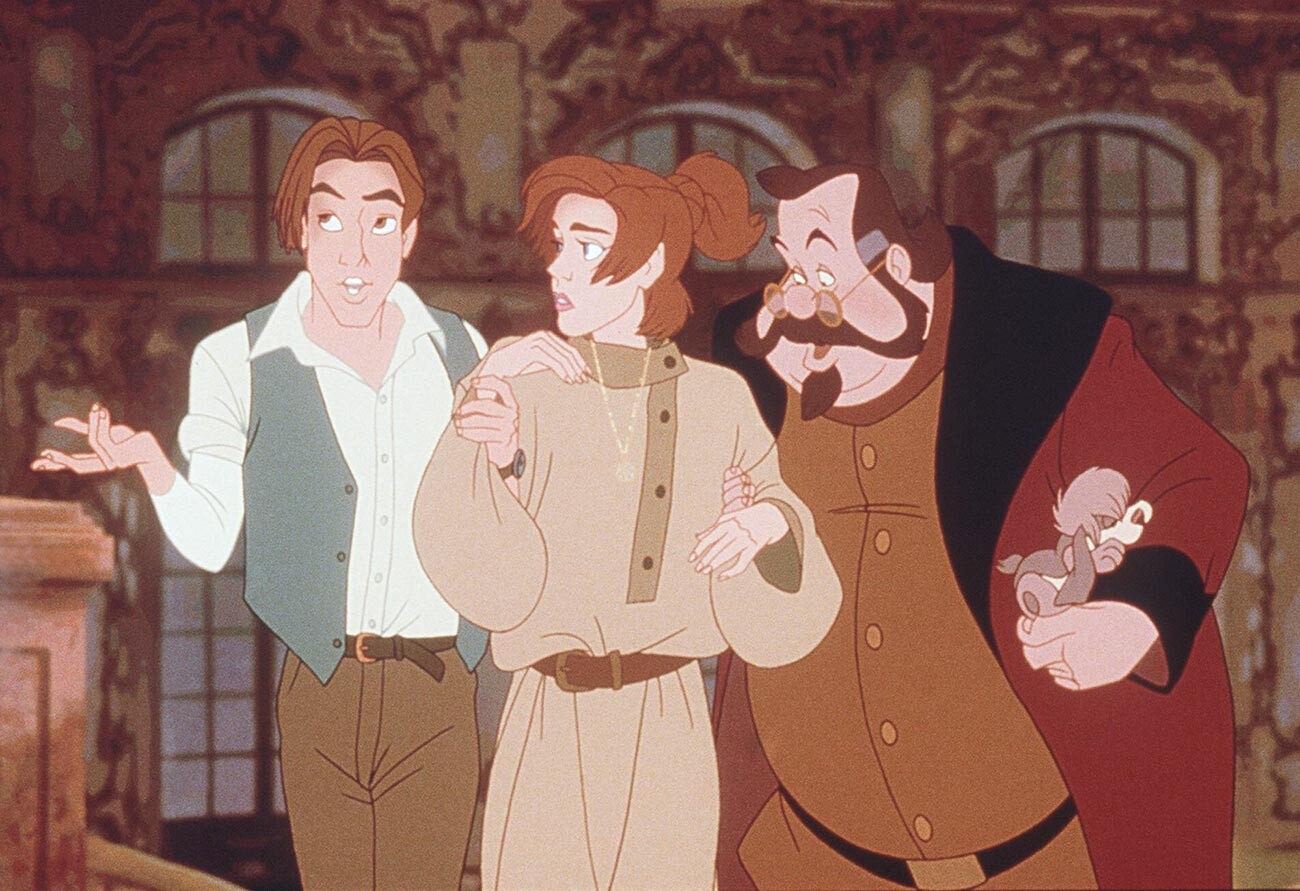
This animated musical fairy tale became one of the most beautiful and exciting tales about Grand Duchess Anastasia Nikolaevna Romanova who, according to legend, was the only survivor of the imperial family’s execution. The animated story is memorable, not only for its vivid heroes and original songs, but also for the mad villain Rasputin, voiced by Christopher Lloyd.
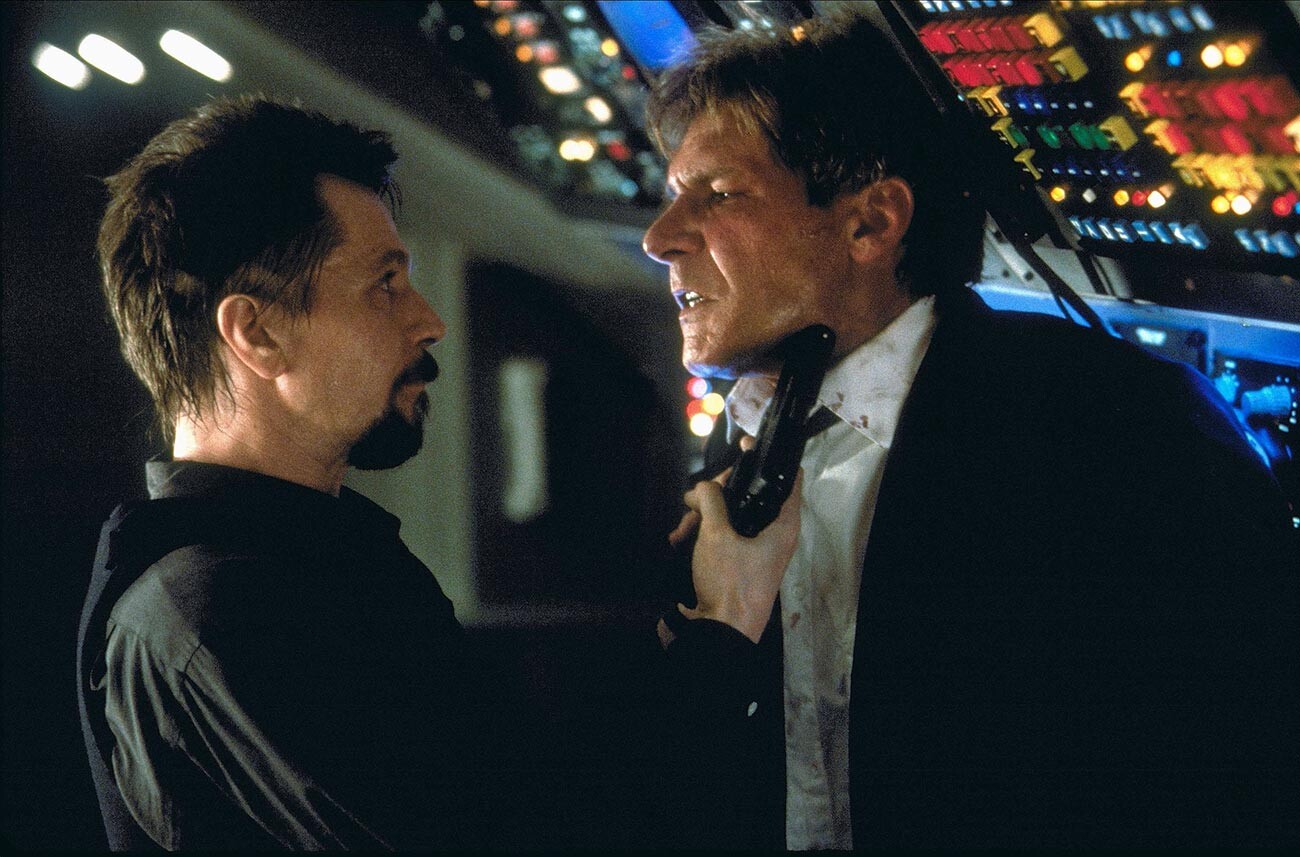
A rare case of the U.S. and Russia’s friendship in an attempt to fight against a common foe – dictator Radek, who has seized Kazakhstan, attacked democracy and threatened to start World War III. Despite the fact that the movie begins in Moscow, U.S. President James Marshall (played by Harrison Ford) still, of course, comes to the fore – and can even speak Russian. The Russian president with the simplistic name Mikhail Petrov only supports him in all his endeavors.
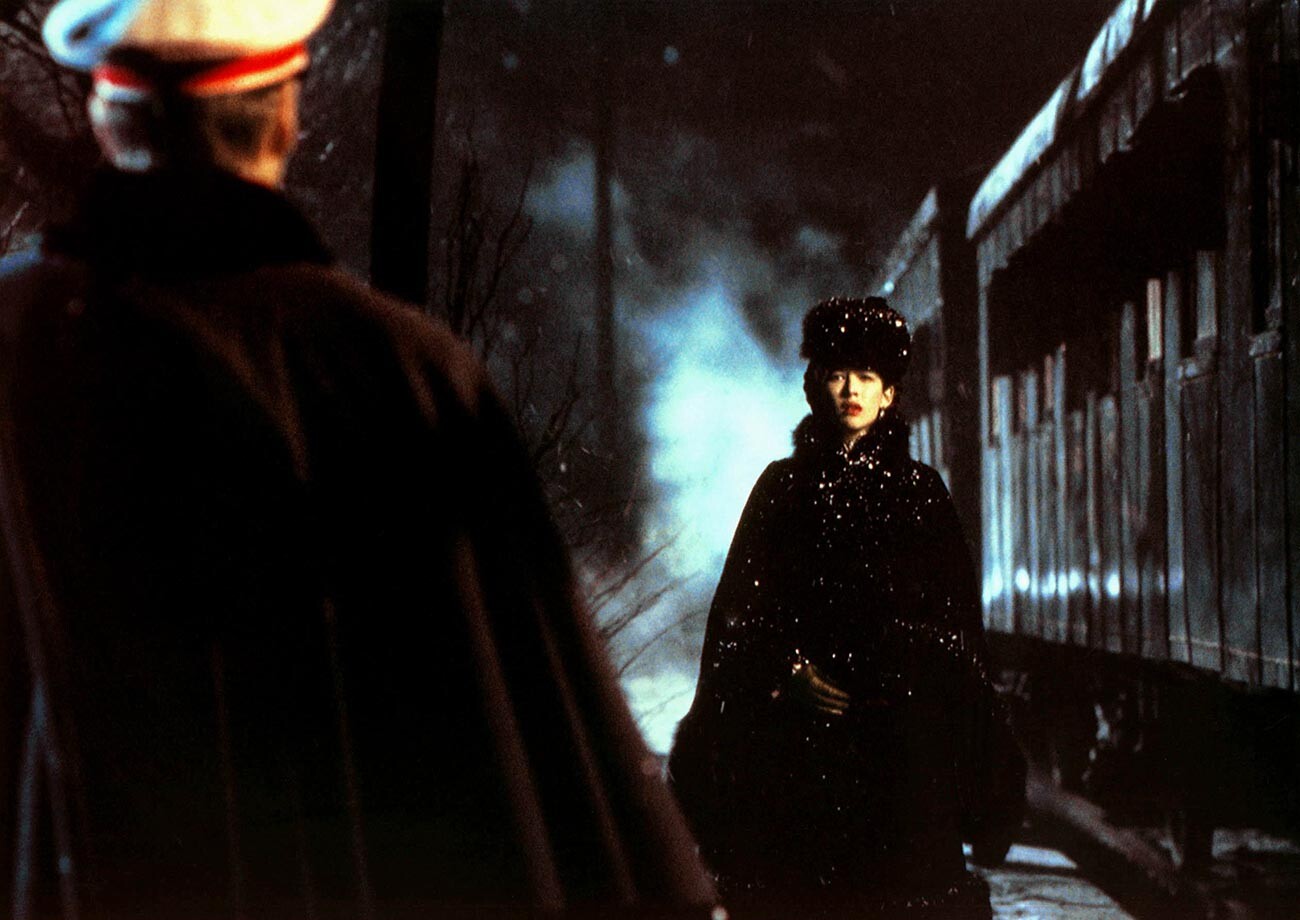
This American drama based on Leo Tolstoy’s famous novel starred Sophie Marceau and was shot in Russia. The movie was partly produced by Mel Gibson’s company and mainly filmed in St. Petersburg. Some scenes were also done at locations in Moscow; for example, one scene was shot at the Novodevichy monastery, the beautiful medieval Moscow architectural ensemble.
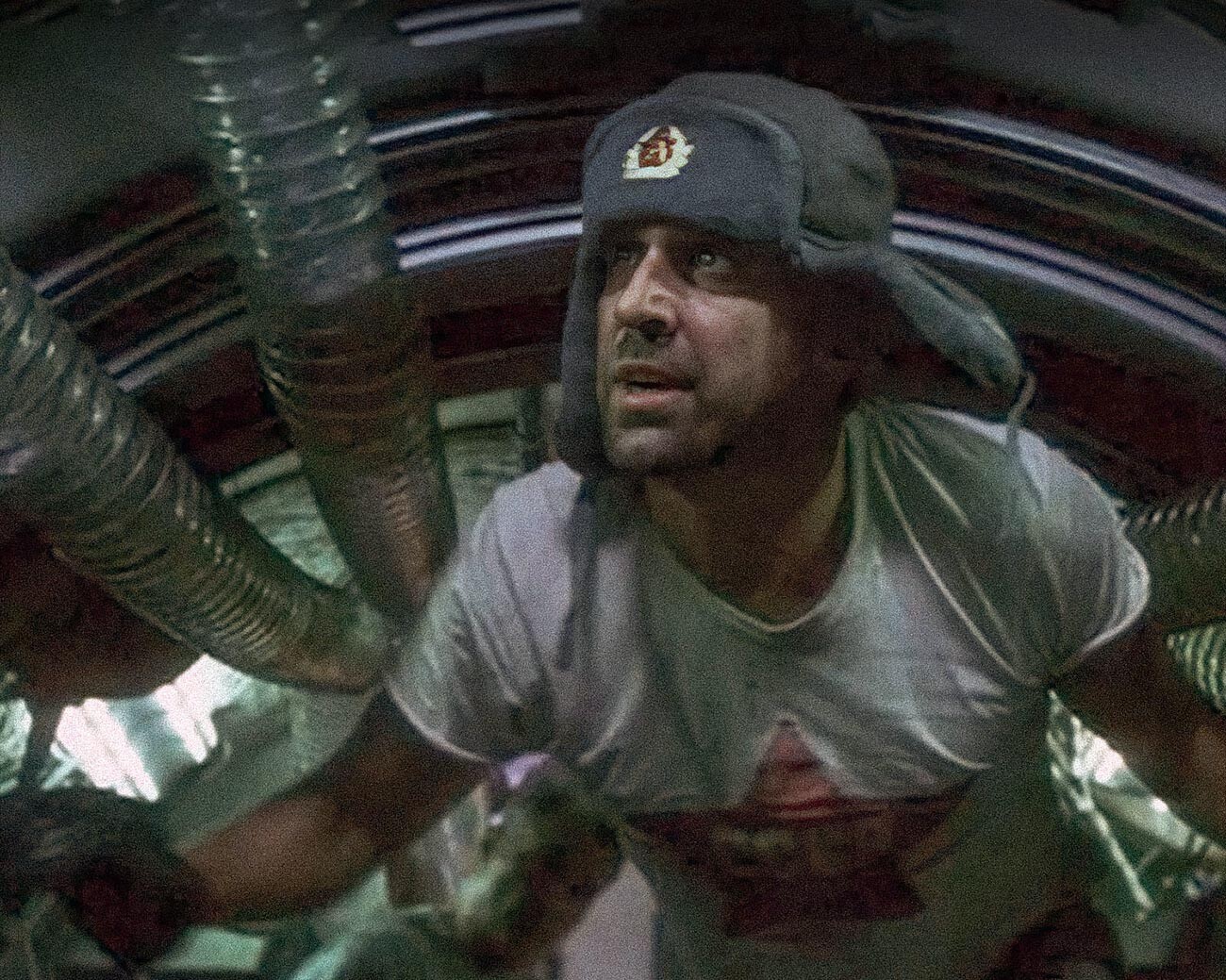
A sci-fi movie that became a classic proved once more that only Bruce Willis can save our planet. But, this time, the “die hard” guy was not alone, but with his buddies. The youngest was played by Ben Affleck, saved from sure demise on the depleted ‘Mir’ Space Station by Russian astronaut-colonel Lev Andropov. He welcomes the Americans drunk, with his ushanka hat on and a T-shirt that says “USSR”. But one can’t just lose one’s professionalism at the bottom of a bottle. Without Andropov, who still manages to squeeze everything worthwhile from the American ‘Independence’ (the name of one of the shuttles), the mission would be under threat and Armageddon would come after all.
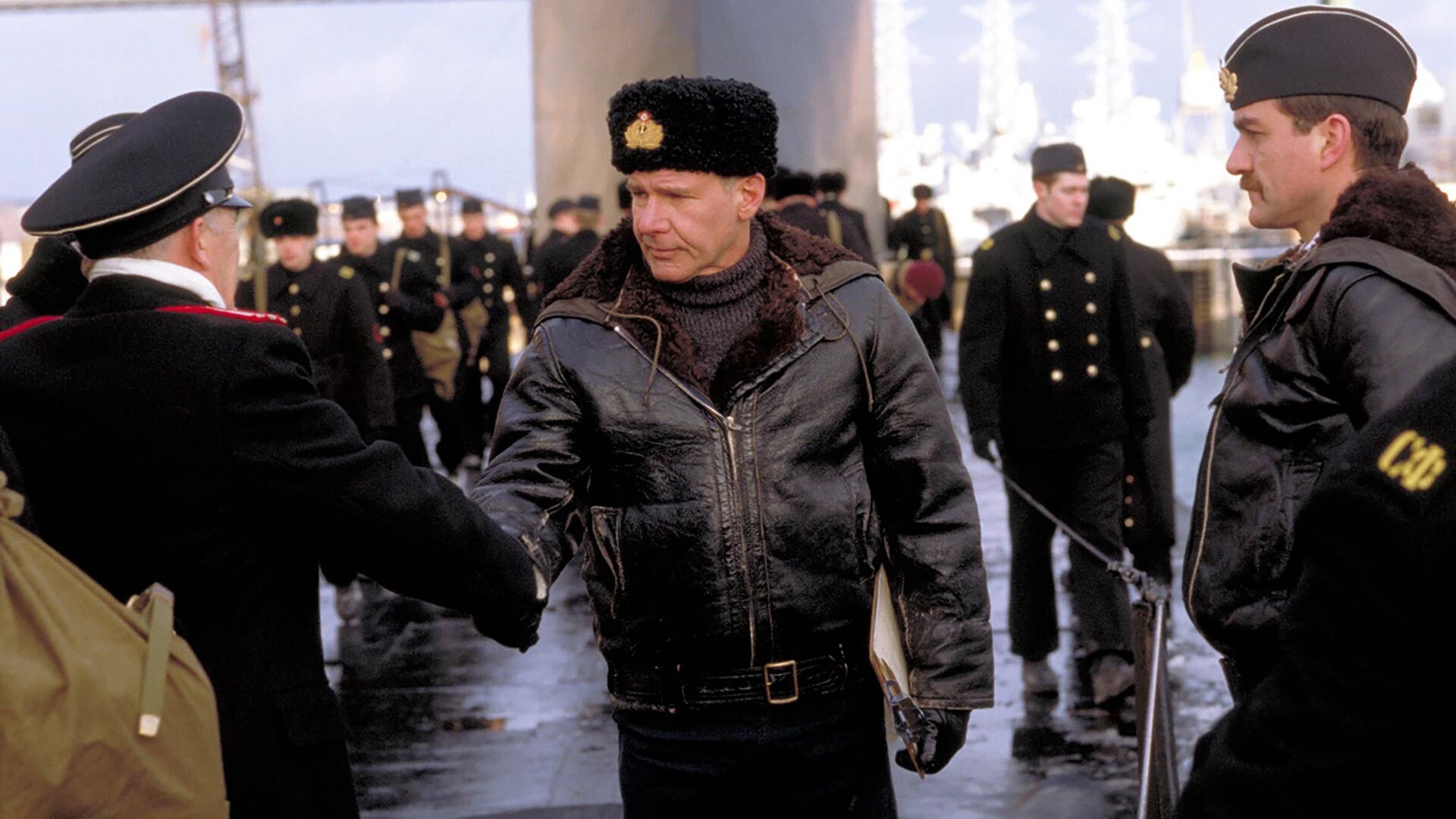
Before Kathryn Bigelow directed the Oscar-winning ‘The Hurt Locker’ (2008), she managed to dive – in all senses – into Russian history. The movie ‘K-19’ is based on real events that took place in 1961, when a Soviet nuclear submarine had an accident and many of those on board died. Keen for detail, Bigelow, during her preparation for the movie, not only interviewed the witnesses of those events, but even managed to get permission to visit the Northern Fleet of Russia. That’s why the movie looks realistic from the first frames – from the technical details to the faces of the crew. The real crew members were skeptical towards the script at first and even released open letters, but, in the end, the movie satisfied them.

This is a political satire, dedicated to the Russian elections of 1996, when Boris Yeltsin was losing ground and the leaders of the Communists and Liberal Democrats – Zyuganov and Zhirinovsky – were breathing down his neck. This movie, based on real events, tells the story of how American political consultants back then came to the rescue of the election headquarters’ heads, Oleg Soskovets and Anatoly Chubais. This movie can’t really be called outstanding in terms of cinema, but it’s the only American movie that captured the effect of global political strategies in Russian elections.
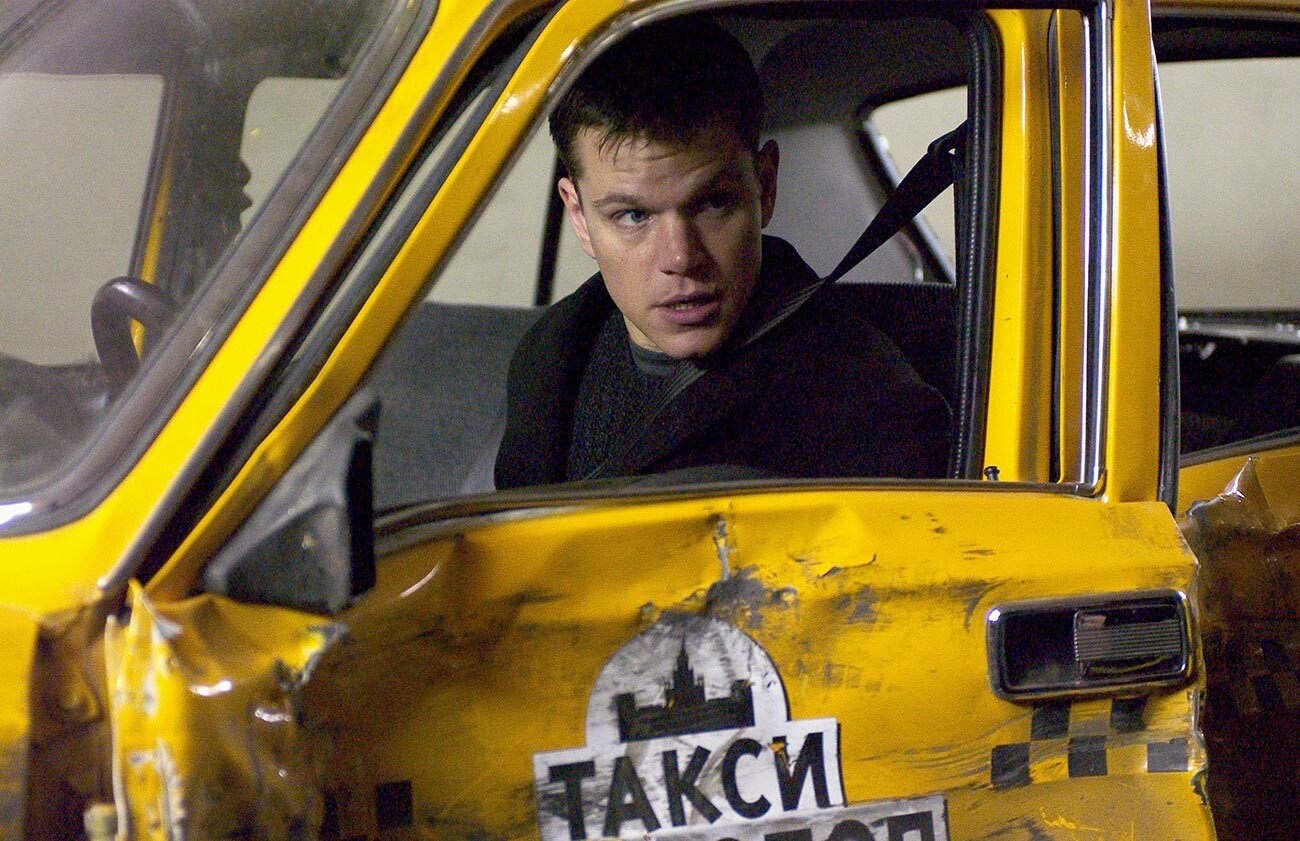
The end of the second part of the Bourne franchise was filmed in Moscow, as well as its famous car chase. Matt Damon completely destroyed a Russian taxi, in which he tries to escape from his adversaries and, in the process of which, he damaged many other cars and wreaked havoc across the city center. Two stuntmen received the ‘Taurus World Stunt Award’ in 2005 for this scene.
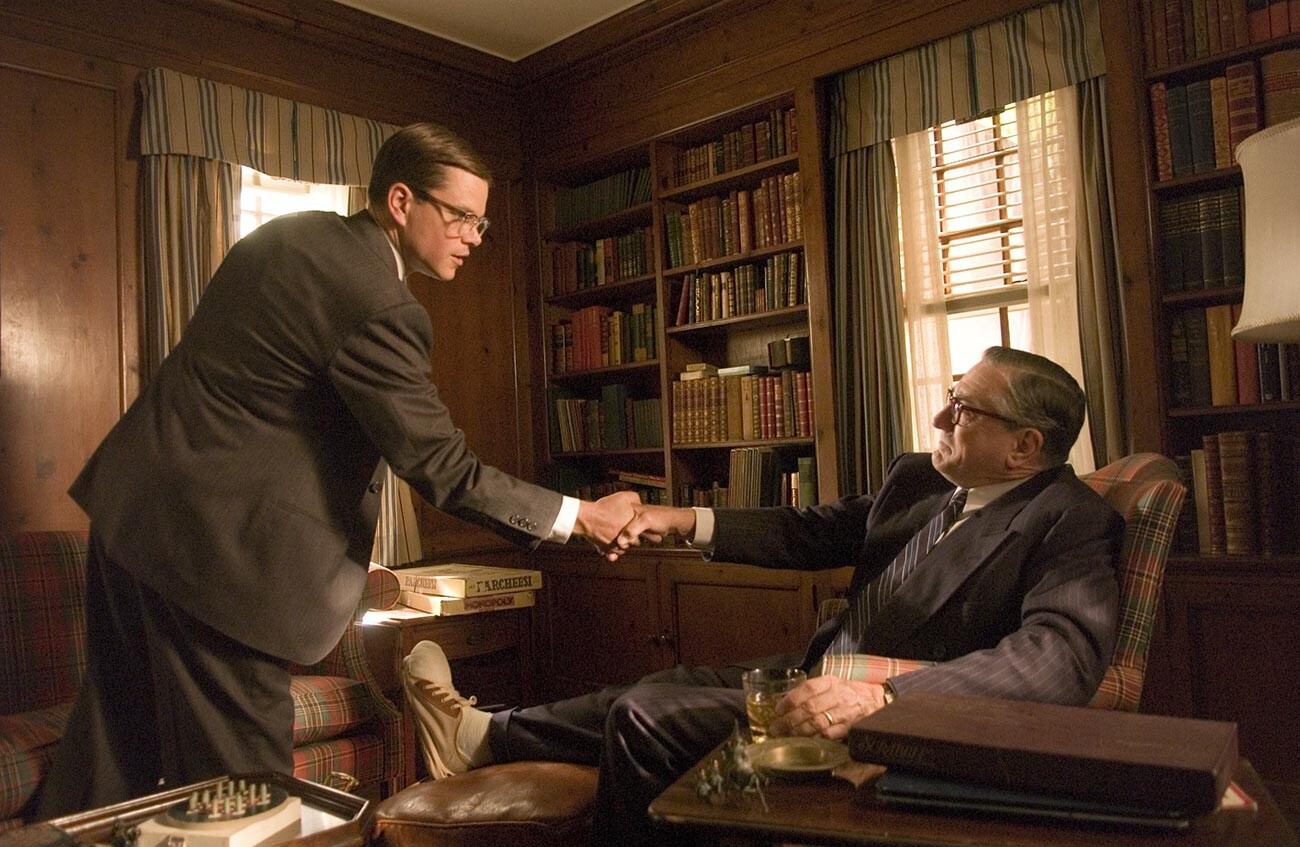
The second directorial experience of Robert De Niro tells the story of the emergence of the CIA. Matt Damon plays its founder who received the nickname ‘Mother’ from his Soviet colleagues. And, of course, the CIA’s formation, chronologically spread across the entire movie, is impossible without its opposition to the USSR and the experience of World War II and the Cold War. But, that’s not the point for De Niro – in every, even the most plain-clothed agent, he tries to discover a complex and truthful, inner life. This regards not only the main character, but also occasional Soviet “spies”.
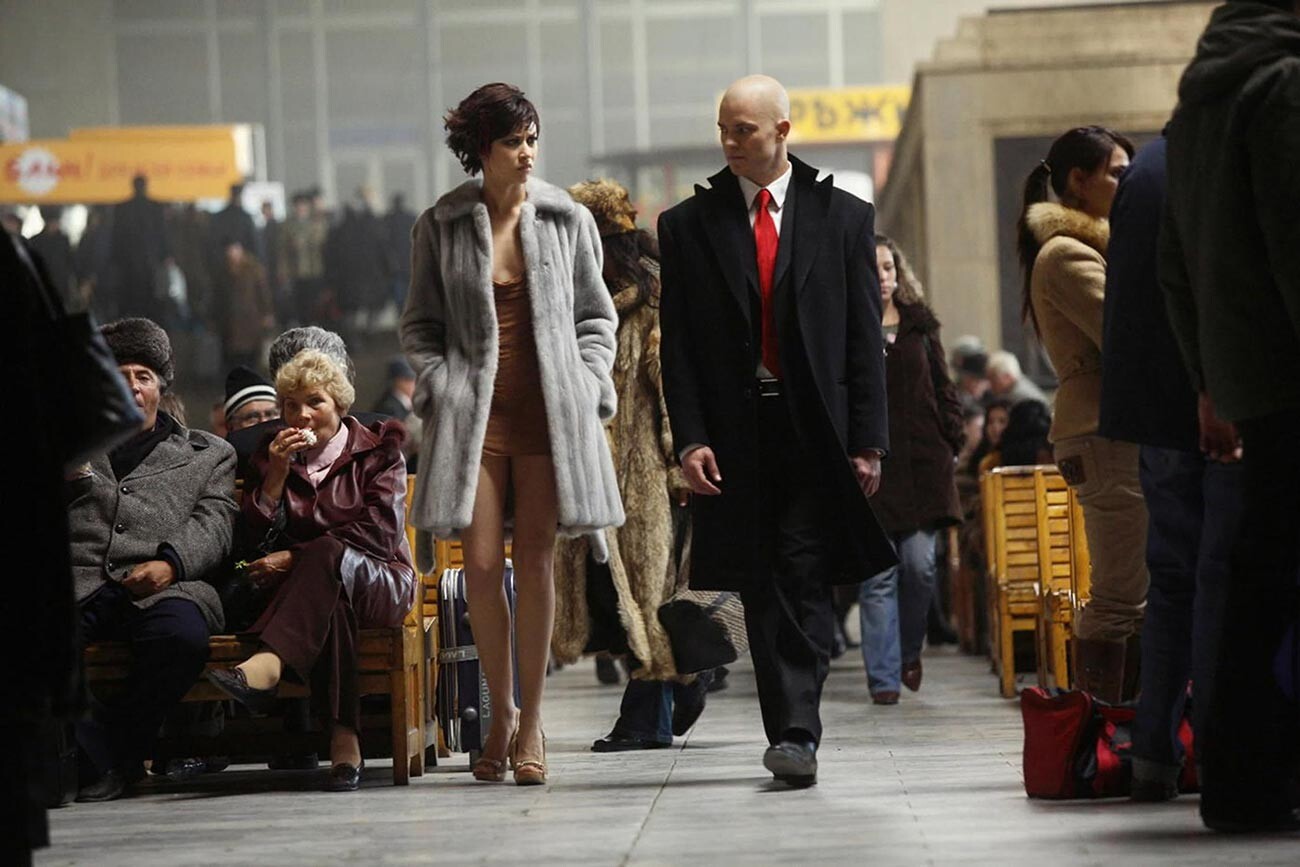
The first and not-very-successful screen adaptation of the video game series about a clone killer was remembered for the case of the Russian president’s, Mikhail Belikoff, murder – who not only had doppelgangers, but also a brother, Boris. The help from the CIA agents, Interpol and also the FSB (the Federal Security Service of the Russian Federation) was of little use. However, it turns out that a Russian prostitute named Nika Boronina can help the main hero – Agent 47. This was one of the first action roles of model and actress Olga Kurylenko.
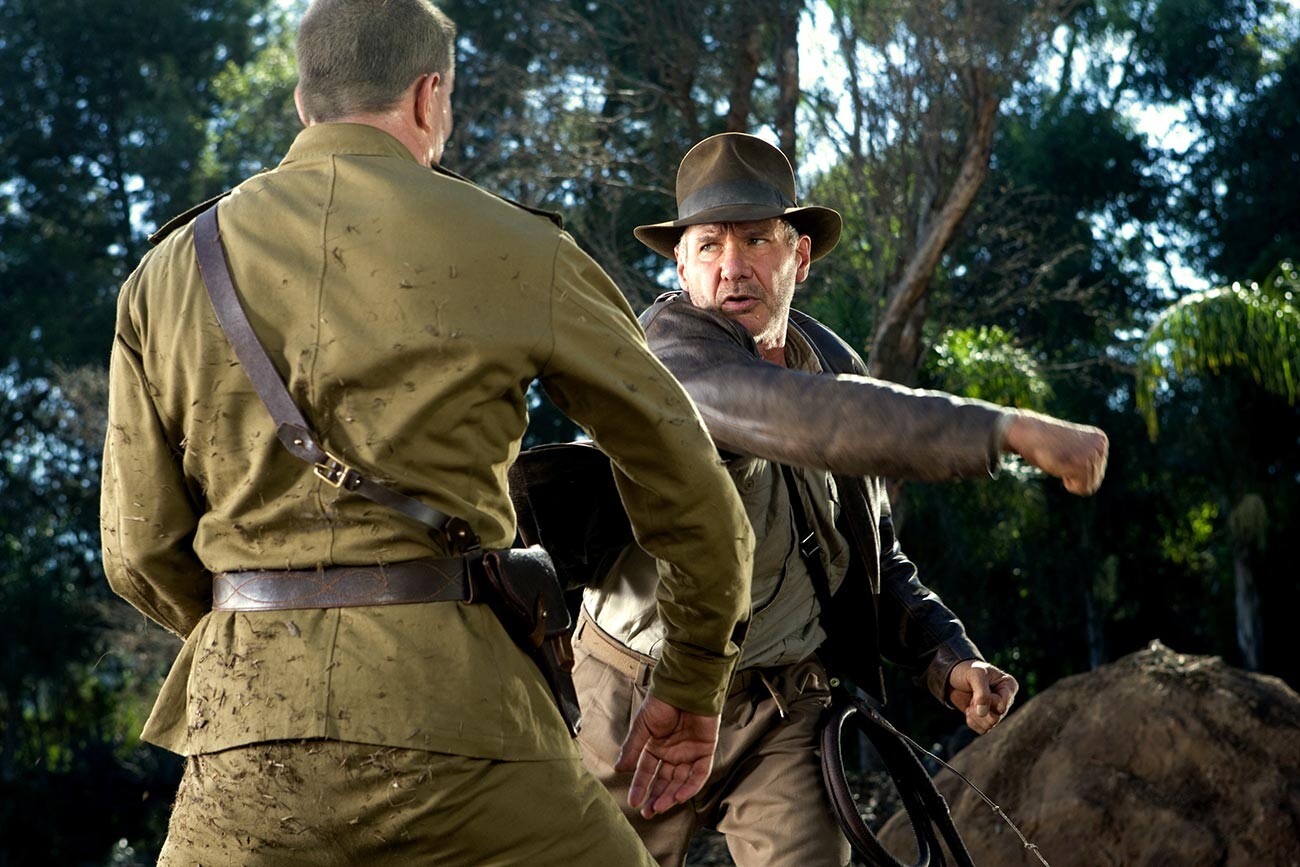
One of the most politicized parts of the adventure franchise by George Lucas. Unsurprisingly, everything happens at the height of the Cold War, as mad scientist Irina Spalko (played by Cate Blanchett) tries to force the ever-independent hero portrayed by Harrison Ford to work for her – and he’s almost declared a Soviet spy because of it. This was the swan song of director Steven Spielberg, who for more than 10 years put a stop to the adventures of the eccentric archaeologist.
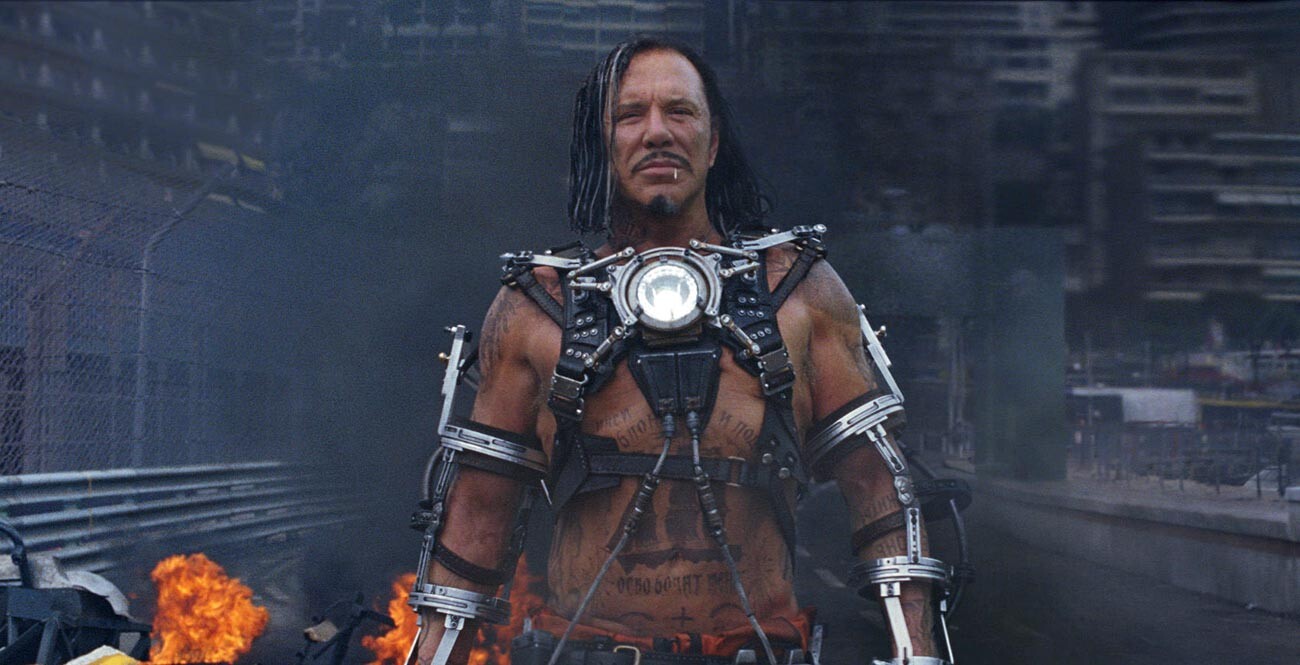
The sequel of the popular movie was marked not only by the first appearance of agent Natasha Romanoff, aka Black Widow, played by Scarlett Johansson, but also of the Russian villain Ivan Vanko, played by Mickey Rourke. A physicist, powerful and quiet in a very Russian way, raised in the middle of nowhere by an alcoholic father, he fancies himself to be the true heir to Stark Industries and goes to take revenge from Iron Man for his gloomy Siberian childhood.
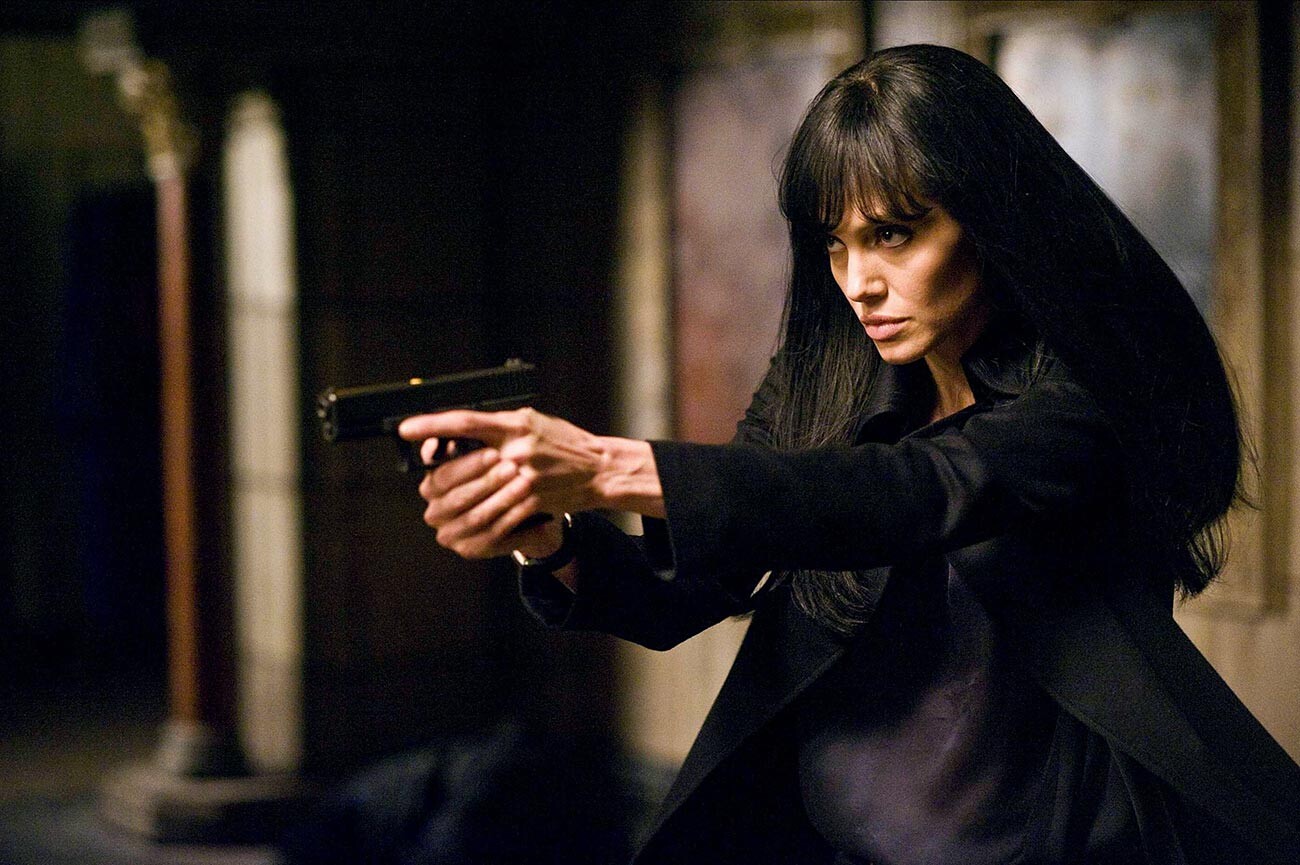
After Angelina Jolie starred in the movie ‘Wanted’ (2008) by Russian director Timur Bekmambetov, she had little to lose. Hence, two years later, she appeared as a double agent codenamed ‘Salt’, working either for the CIA or for the KGB. She is the main achievement of this whole movie. Jolie looks equally fitting as a blonde, a brunette, or with a fur hat on, both in the interiors of the Capitol and the gray dungeons of the Russian capital.
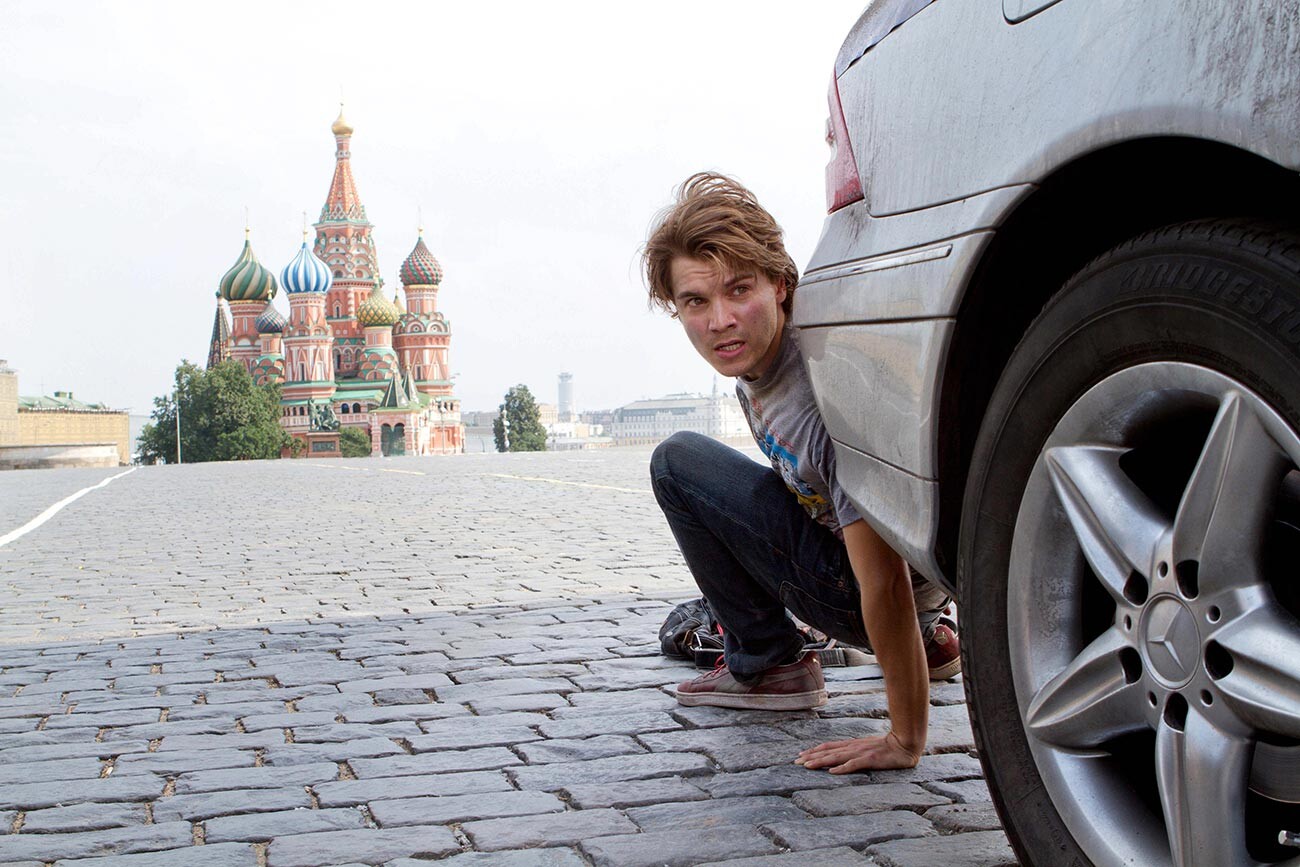
This movie is a sci-fi experiment of the abovementioned Russian producer and director, Timur Bekmambetov. When riding his wave of Hollywood success, he not only gained the support of major studios, but also sent actors Max Minghella and Emile Hirsch to Moscow. They play startup partners who encounter both a person who stole their idea and a true apocalypse that they couldn’t have overcome without their new friends – the Russians, of course.
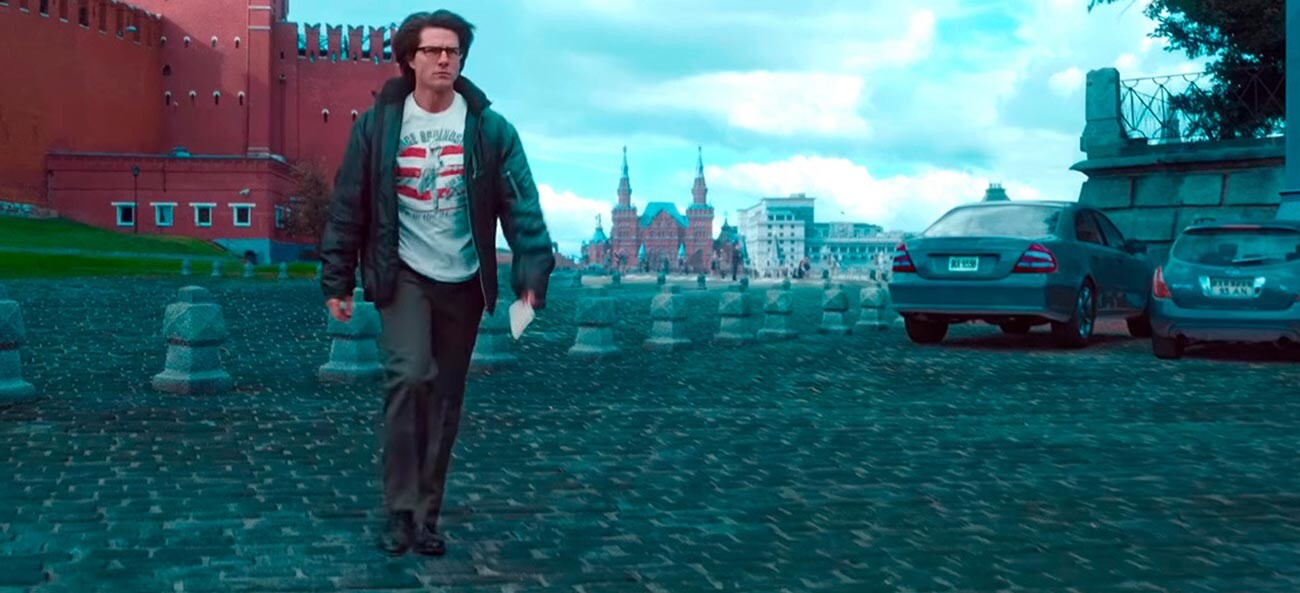
Although much of the movie’s actions take place in the Russian capital, most Moscow scenes were in fact filmed in Prague. For example, the scene where terrorists blow up the Kremlin while Tom Cruise desperately runs away from Red Square was not shot in the Russian capital. To give a sense of authenticity, the filmmakers made several wide shots of Moscow’s city center.
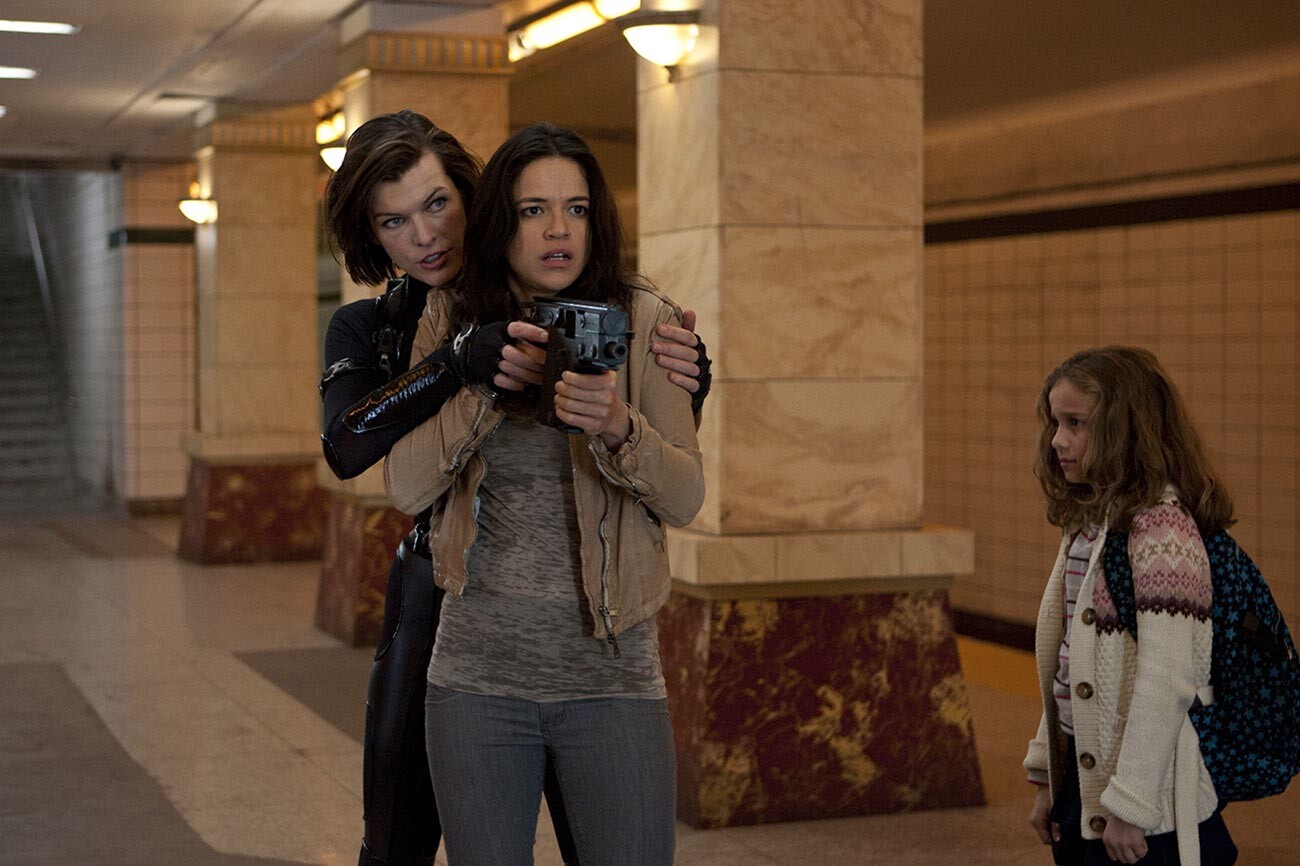
The idea to film this installment of the futuristic horror franchise in Russia was proposed by actress Milla Jovovich and it was eventually shot in Russia’s Far East, in Kamchatka, and in Moscow. According to the media, filming on the Red Square lasted several hours and was closed to the public. In the movie, Jovovich battles vicious mutants near the Kremlin and then enters the subway by sliding down the escalator.

The sequel of a comic book movie about the busy life of American pensioners led by Bruce Willis significantly expanded geographic borders and was majorly dedicated to Moscow – shot, however, not in Russia, but in pavilions in London. There, according to the movie’s script, the remains of a dangerous nuclear bomb from the Cold War period are stored and it’s there where the team of daredevil pensioners is headed.
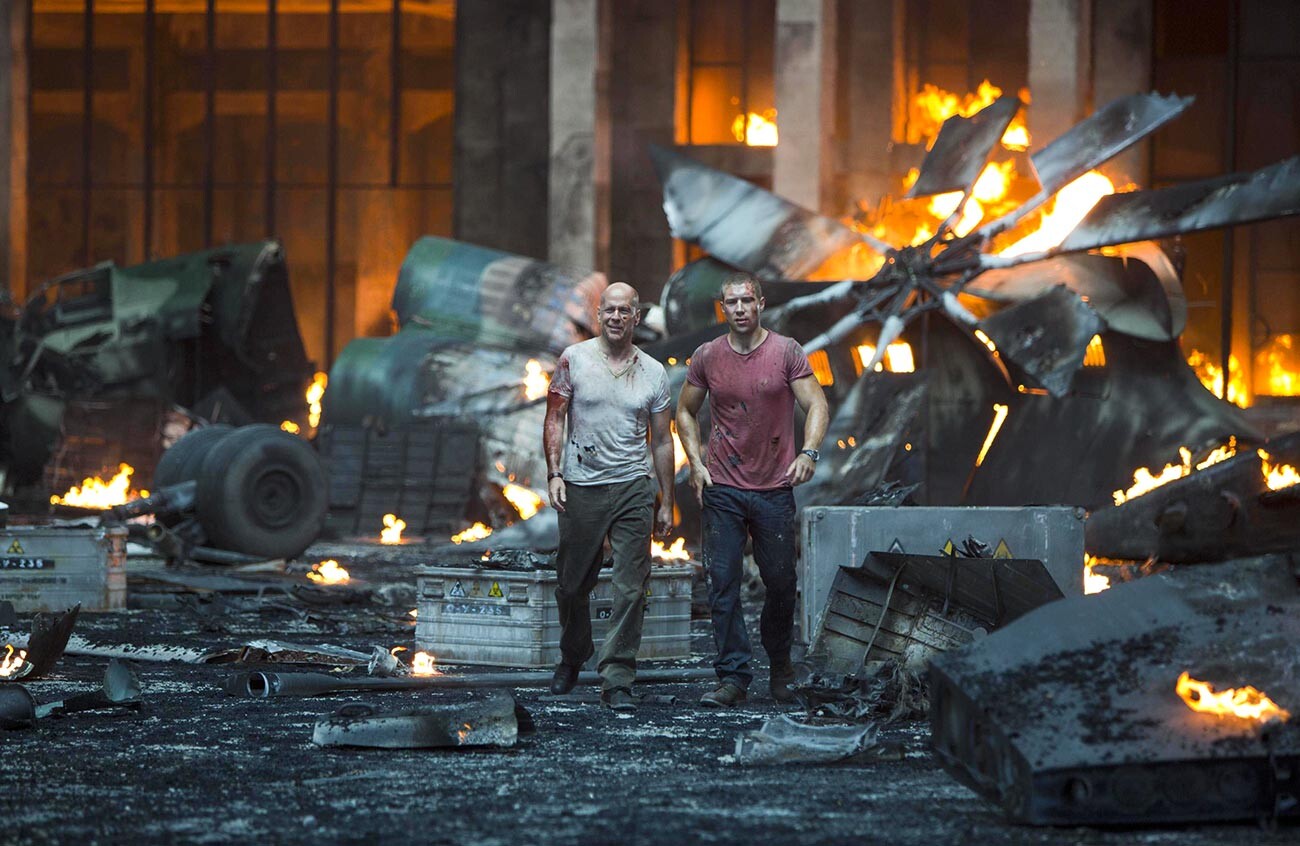
Just as with ‘Mission: Impossible – Ghost Protocol’, most scenes in this film were made in Budapest, even though the movie is set in Russia. According to Bruce Willis, however, the scenes of famous Moscow skyscrapers were shot in the Russian capital and, in one of them, a helicopter ruthlessly shells the Moscow State University building with machine guns and missiles.
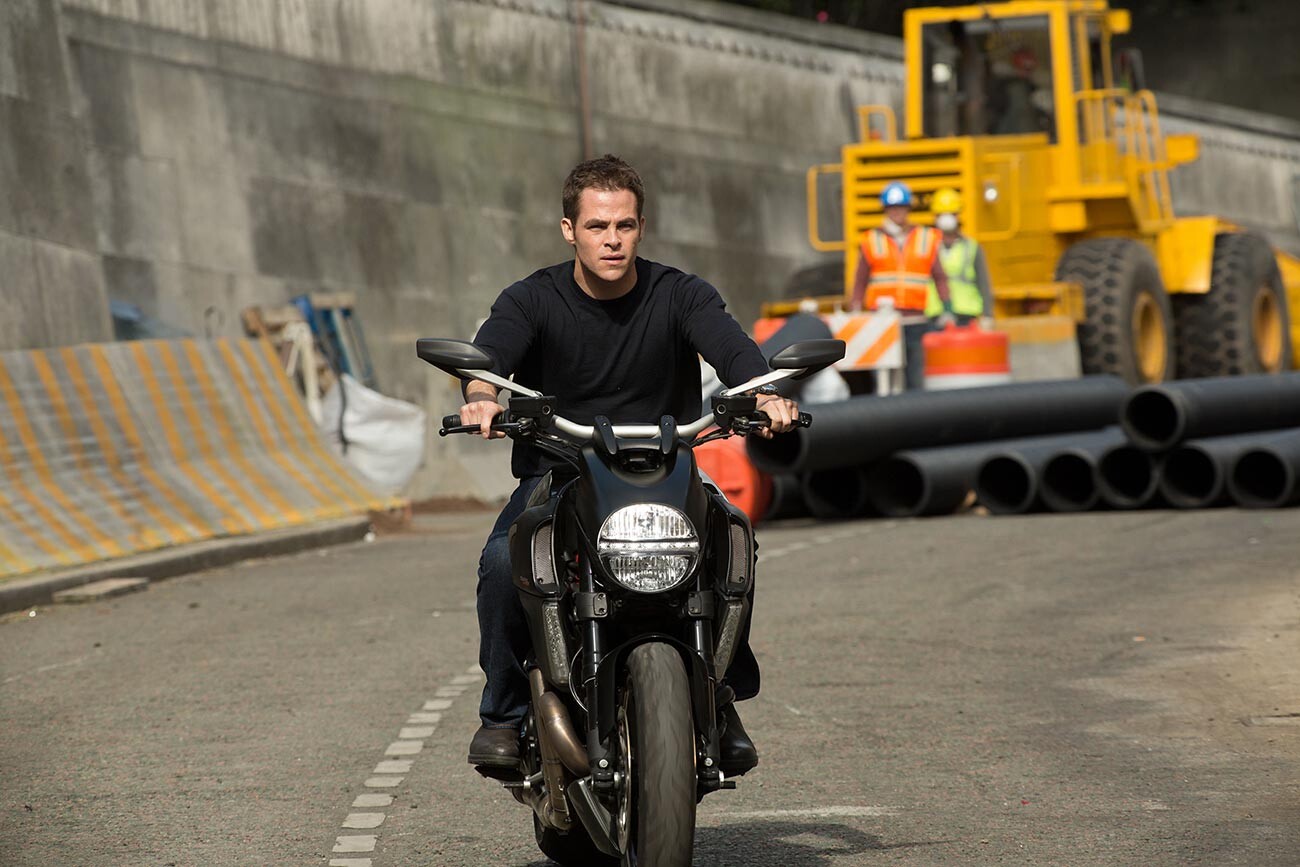
For his role, Chris Pine had to briefly travel to Moscow. It was, however, predominantly shot in America. There, he finds himself on a true Russian TV show – with an oligarch named Cherevin that almost goes missing (played by director Kenneth Branagh), his many women and his son (played by Alec Utgoff who only recently gained fame, thanks to the hit TV show ‘Stranger Things’). The attempts to declassify private and public matters don’t come cheap for all the participants.

We’re in the middle of the Cold War again, but this time it’s not a standoff between spies, but on the chessboard instead. And it’s not bound to politics, but specifically to two strong personalities – Bobby Fischer and Boris Spassky. If they sacrifice a pawn, it’s for their own sake and not for the country. This is a powerful psychological drama about the most intellectual sport where individual skills and abilities are much more important than party parity.
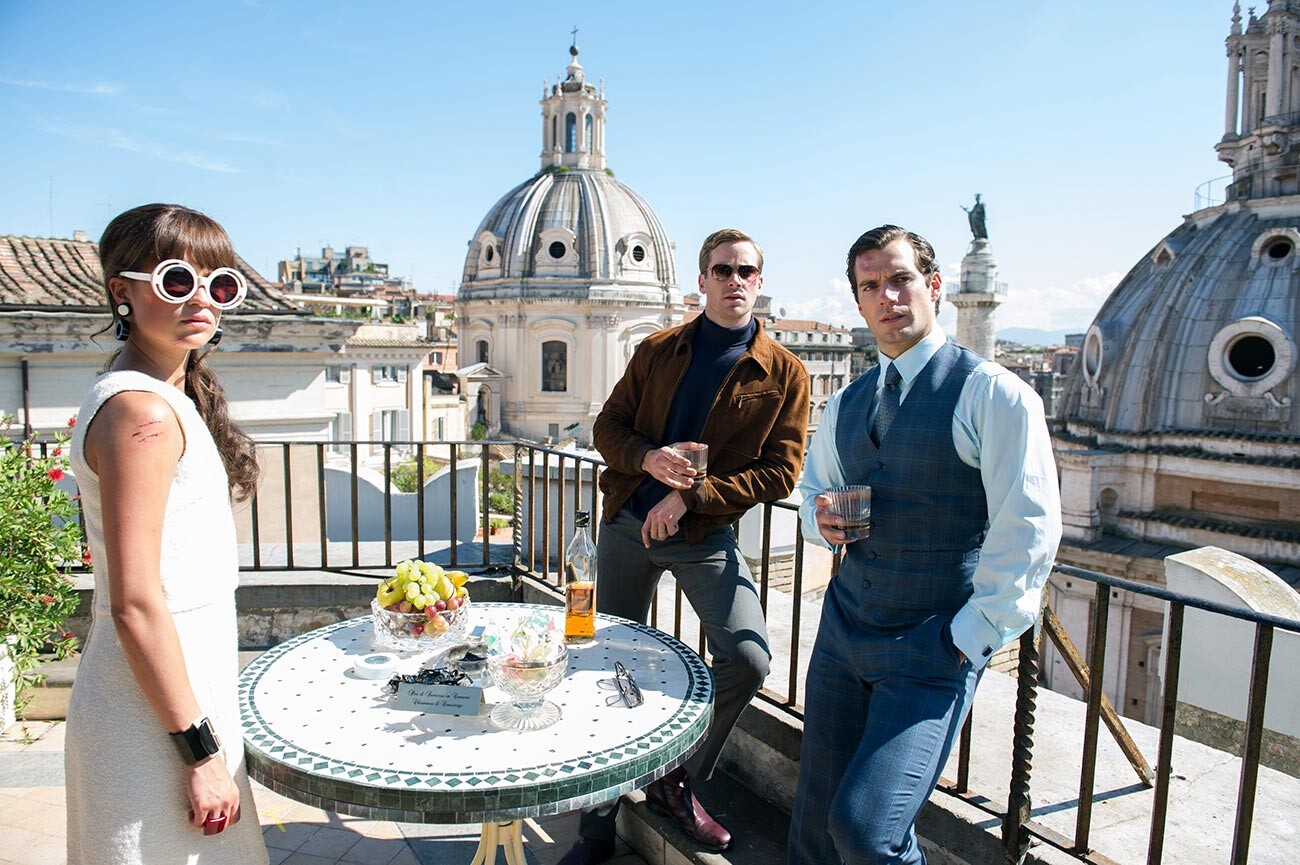
This cute Guy Ritchie parody of all spy movies of the Cold War era at once is based on a British TV show of the same name from the 1960s. Ritchie gave it a new shine, carried out by the main characters: two involuntary agents, Napoleon Solo from the CIA and Illya Kuryakin from the KGB. Cinema hadn’t seen such stylish and ironic agents of that era before.
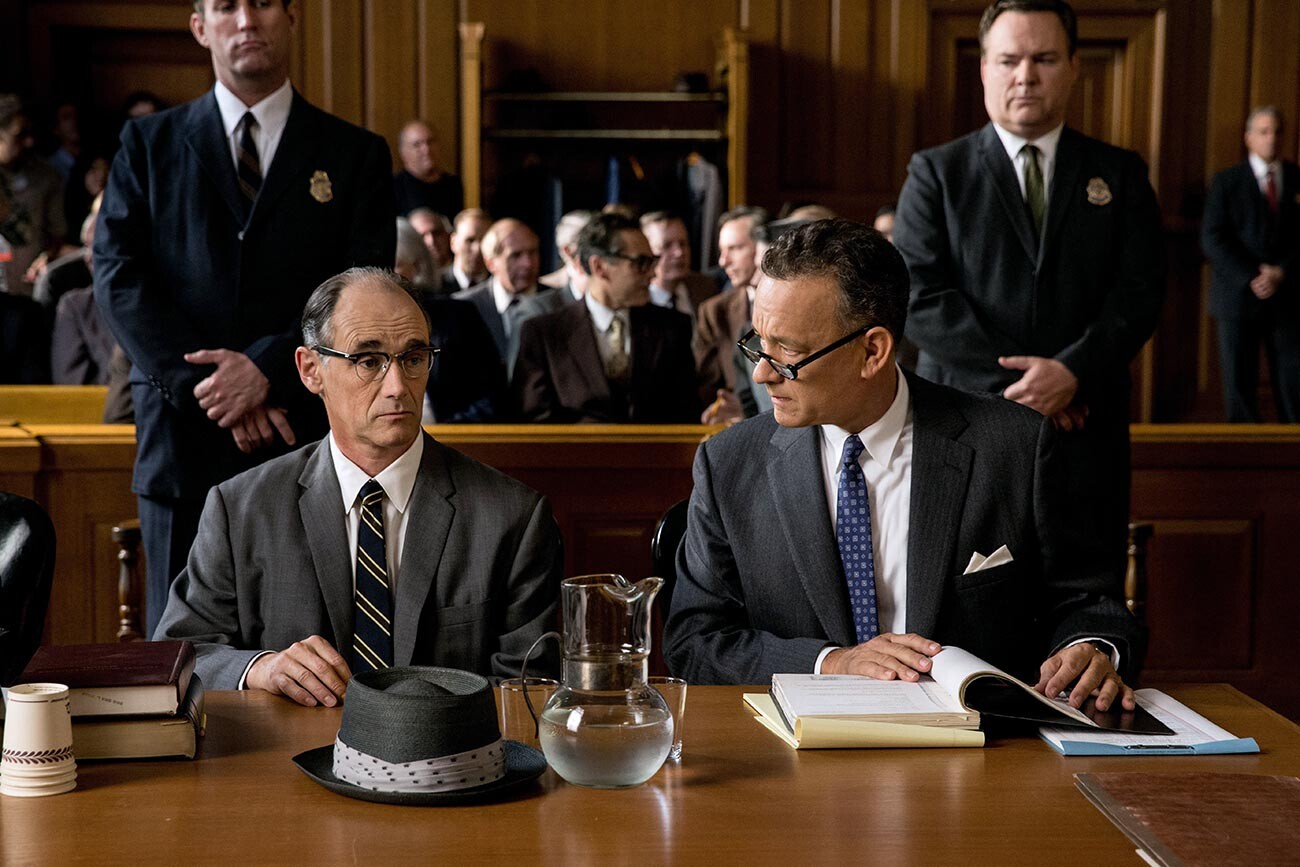
This thriller by Steven Spielberg is a rare format of a movie about the Cold War where the director doesn’t try to take a side but instead remains “above” the battle, equally tangibly presenting both the CIA, the KGB, as well as the “Stasi” agents. In many ways, it’s because he chose stage actor Mark Rylance for the role of Soviet spy Rudolf Abel, for which Rylance was awarded an Oscar. The script is based on real events when Abel was exchanged for American pilot Frances Gary Powers, who had been shot down over the Soviet Union.
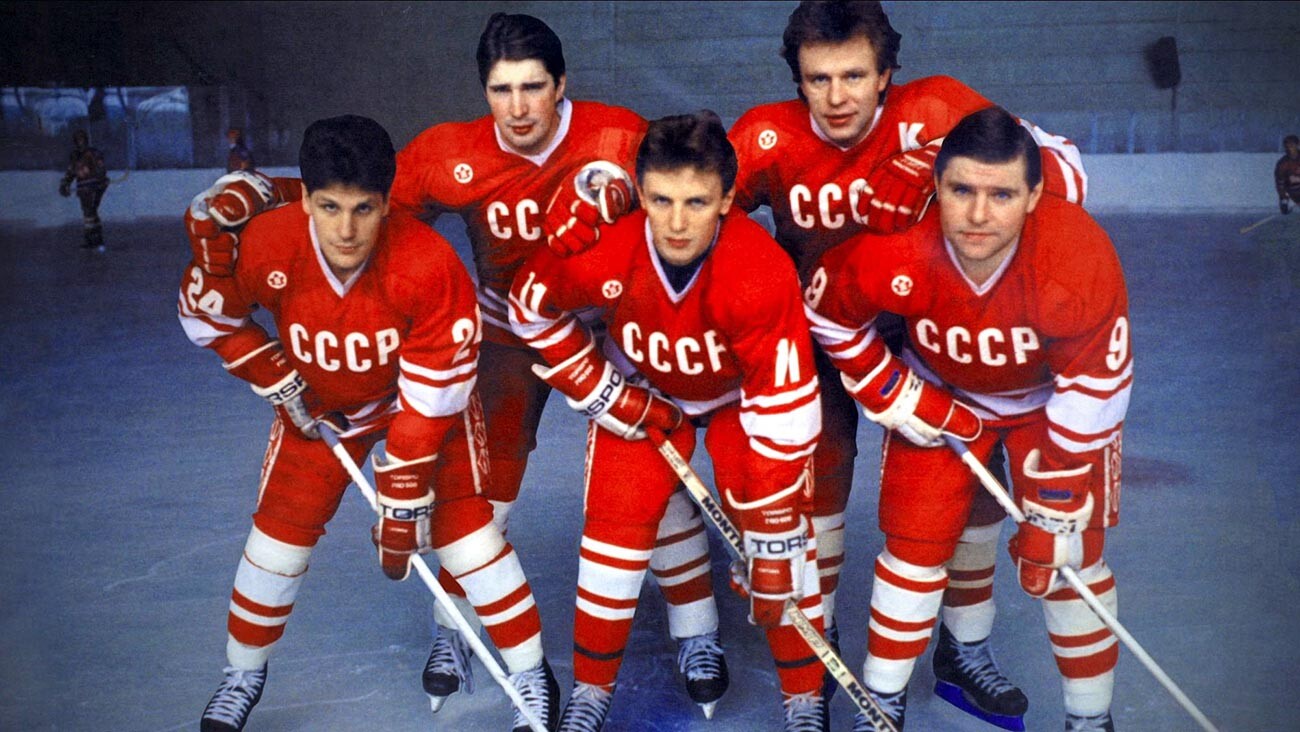
This is an exciting documentary created by Gabe Polsky, who comes from a family of Soviet emigrants. It’s about the link between the USSR’s school of ice hockey and the traditions and customs of the local regime. By the examples of the interviews with “The Russian Five” – Makarov, Larionov, Krutov, Kasatonov and Fetisov – as well as goalkeeper and coach, Vladislav Tretiak, Polsky endeavored not only to portray the famous Soviet school of hockey, but also to show how each of the athletes, still young back then, was battling on ice not just for themselves, but for their country, too.
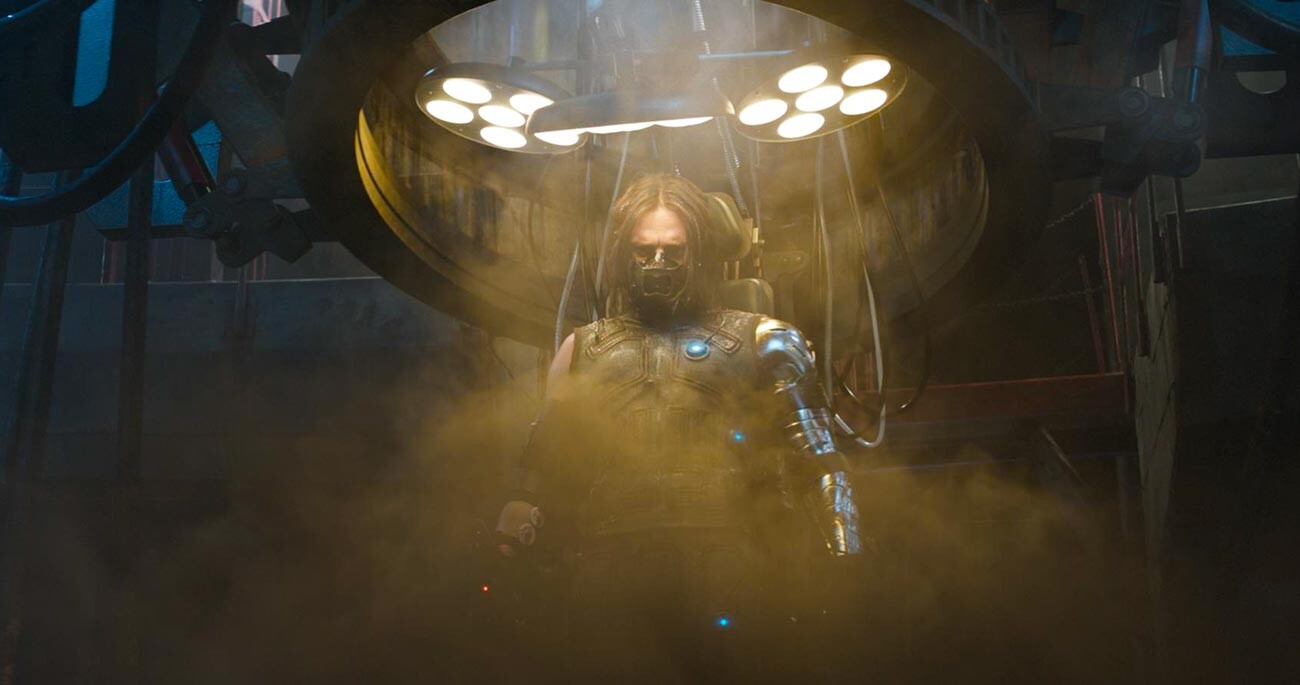
In the sequel to ‘Captain America: The First Avenger’ (2011), his old enemy – Winter Soldier – is completely out of control, so it’s time to delve into his past which was also spent in a cryogenic sleep in the Siberian branch of Hydra. In this part of the movie, all Marvel heroes unite – from Wanda/Vision to Spider-man and Ant-man, so there’s no time really to explain all the geographic features of Wakanda or Siberia.
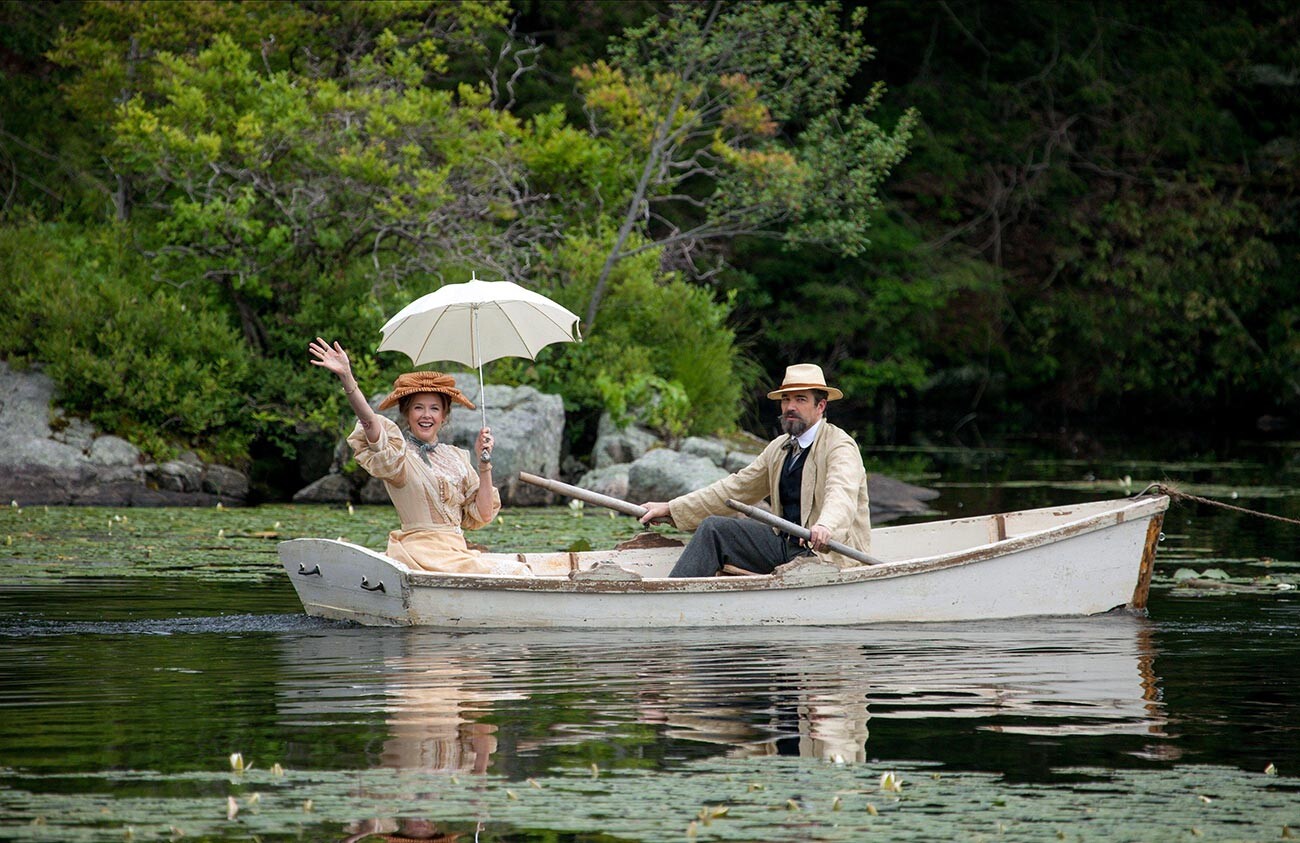
This is a successful screen adaptation of the most popular play by Anton Chekhov, both in Russia and abroad. Directed by Michael Mayer, who’s usually engaged in theater (directing on Broadway and at the Metropolitan Opera), this Chekhov play really found its cinematographic and international life.

This movie is a funny representation of the thesis about the endlessness of the Cold War. After sustaining an injury, Bolshoi Theater prima Dominika Egorova, who lives on the outskirts of Moscow, goes with her uncle Ivan – a state security agent – to a special unit that teaches not only how to love the Motherland, but defeat enemies, too. Unsurprisingly, at some point, Jennifer Lawrence’s character begins to work as a double agent – both for Russia and the U.S.
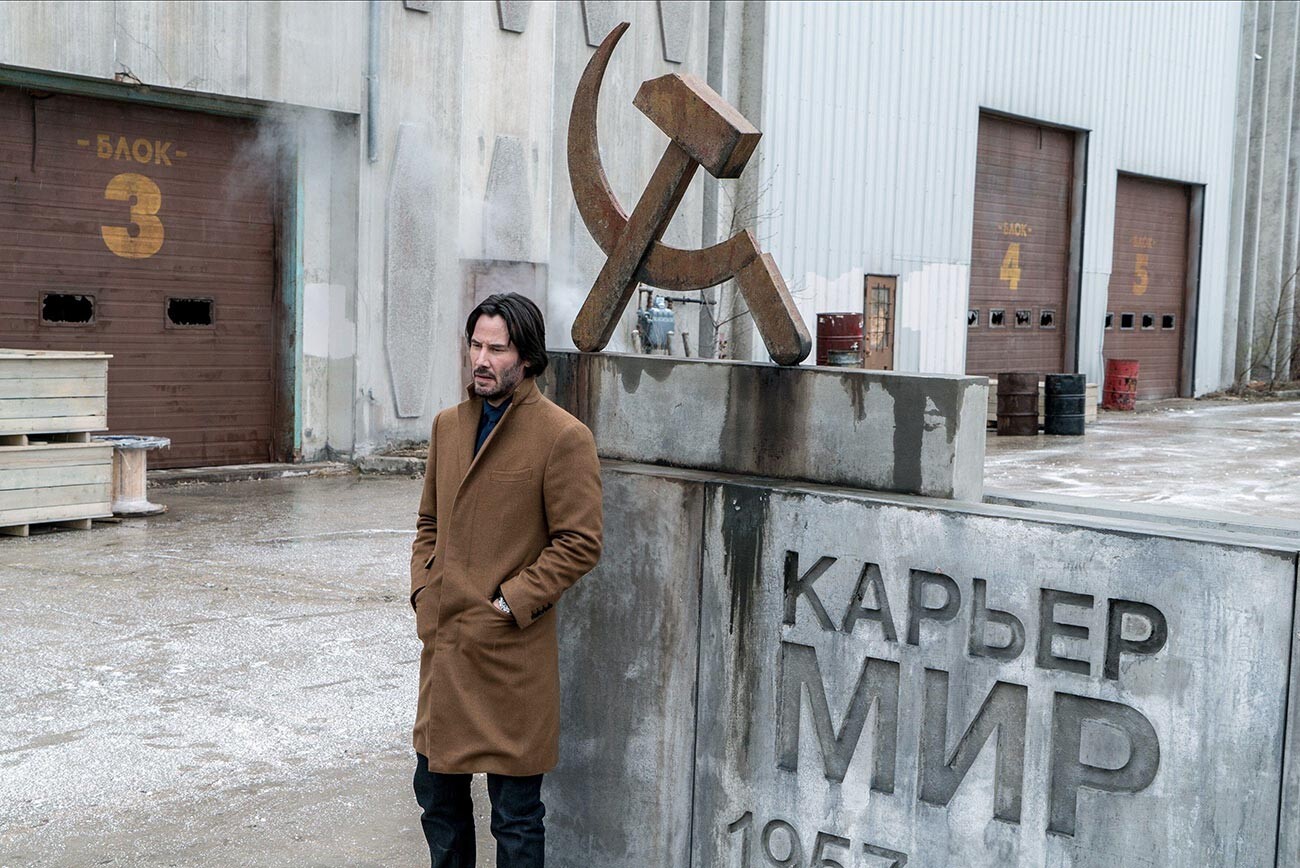
Keanu Reeves’ character – an American diamond merchant named Lucas Hill – travels to St. Petersburg for a deal (actually shot in Russia), but he’s unable to find his partner, Pyotr. Not to get killed against the backdrop of the Hermitage, Hill goes to a Siberian town of Mirny in search of Pyotr where he meets strange new friends and falls in love with the fatal owner of a local cafe. Together, they warm him up in his criminal search, on which Hill embarks in a very thin coat – after all, he initially traveled to the scenic St. Petersburg and not snow-bound Siberia (which was actually filmed in Canada).
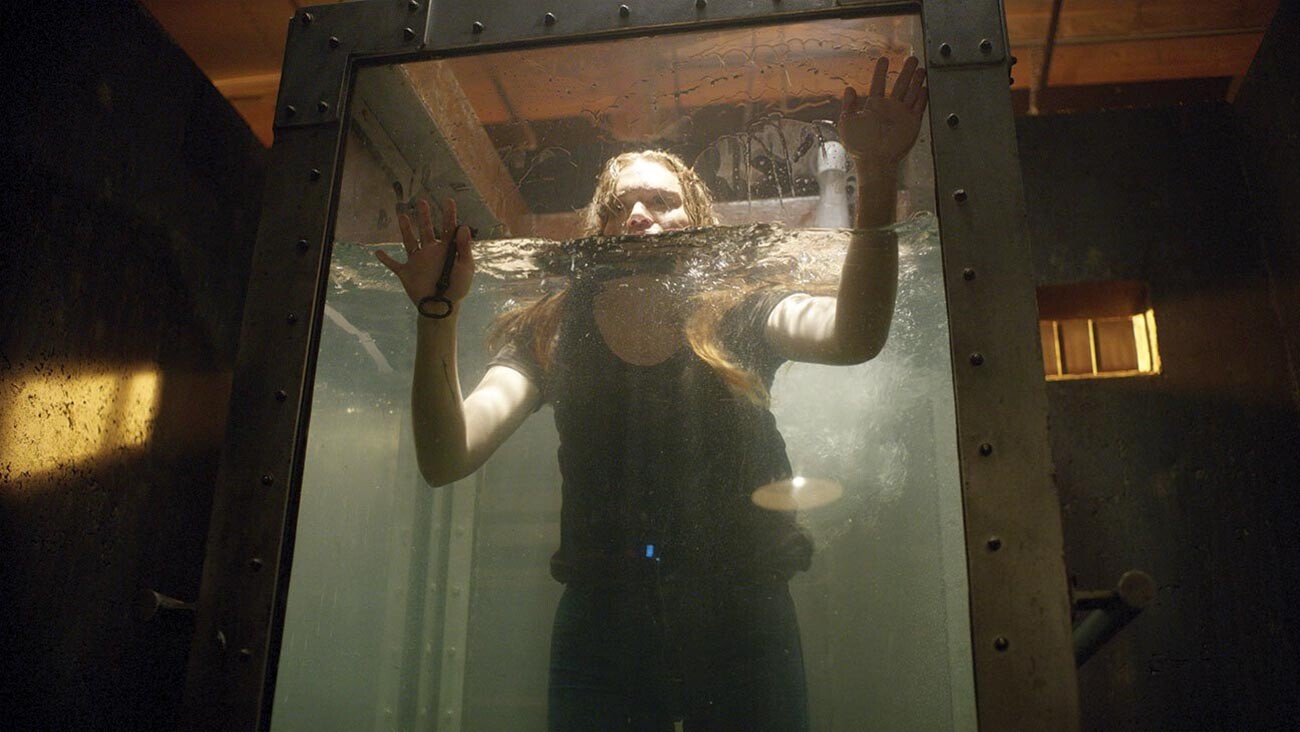
This is an unexpectedly humorous horror movie about an escape room in the Russian capital. A group of American bloggers travels to Moscow and meets a mysterious young wealthy man who promises all kinds of vivid experiences. If we get rid of the horror label, you could consider it a classic adventure of foreigners in Russia!
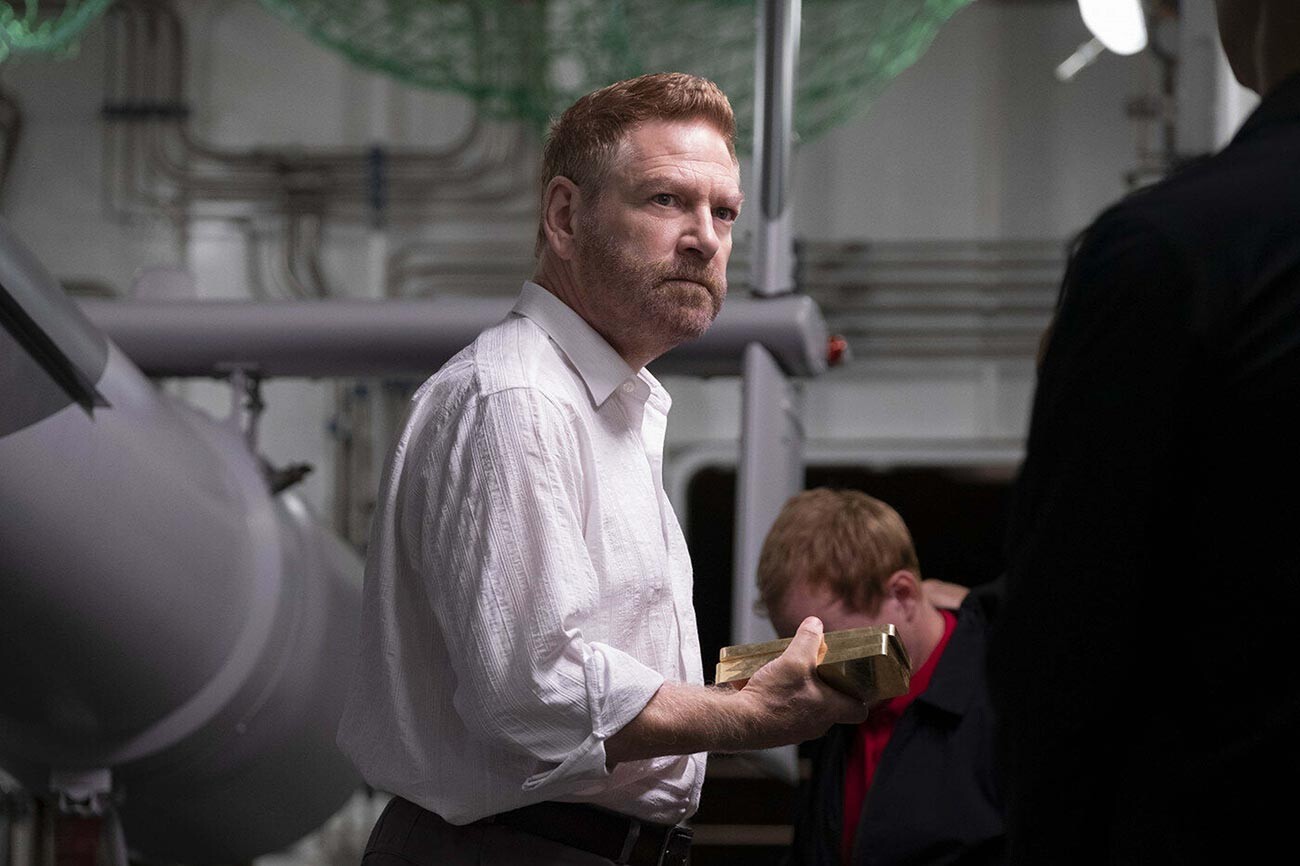
This movie, partially shot in Estonia, tells the story of preventing World War III and generally the catastrophe that could happen if just one man learned how to manipulate time. The beginning of the movie, with the seizure of an opera house in Ukraine, is a reference to the Nord-Ost siege of a Moscow theater on Dubrovka Street in Fall 2002. The main villain of Tenet is a Russian oligarch and an arms dealer, coming from the imaginary Siberian town of Stalsk, named Andrei Sator (played by British actor Kenneth Branagh).

This is a spoof comedy about Europe’s main singing contest. The movie mocks everything at once – the format of such “contests”, as well as the national characteristics of not only Scandinavians (who are brought to the forefront here), but also Russians. Perhaps the most prominent character is Alexander Lemtov, resembling real Russian contestants of this contest from different years - Philipp Kirkorov and Dima Bilan.
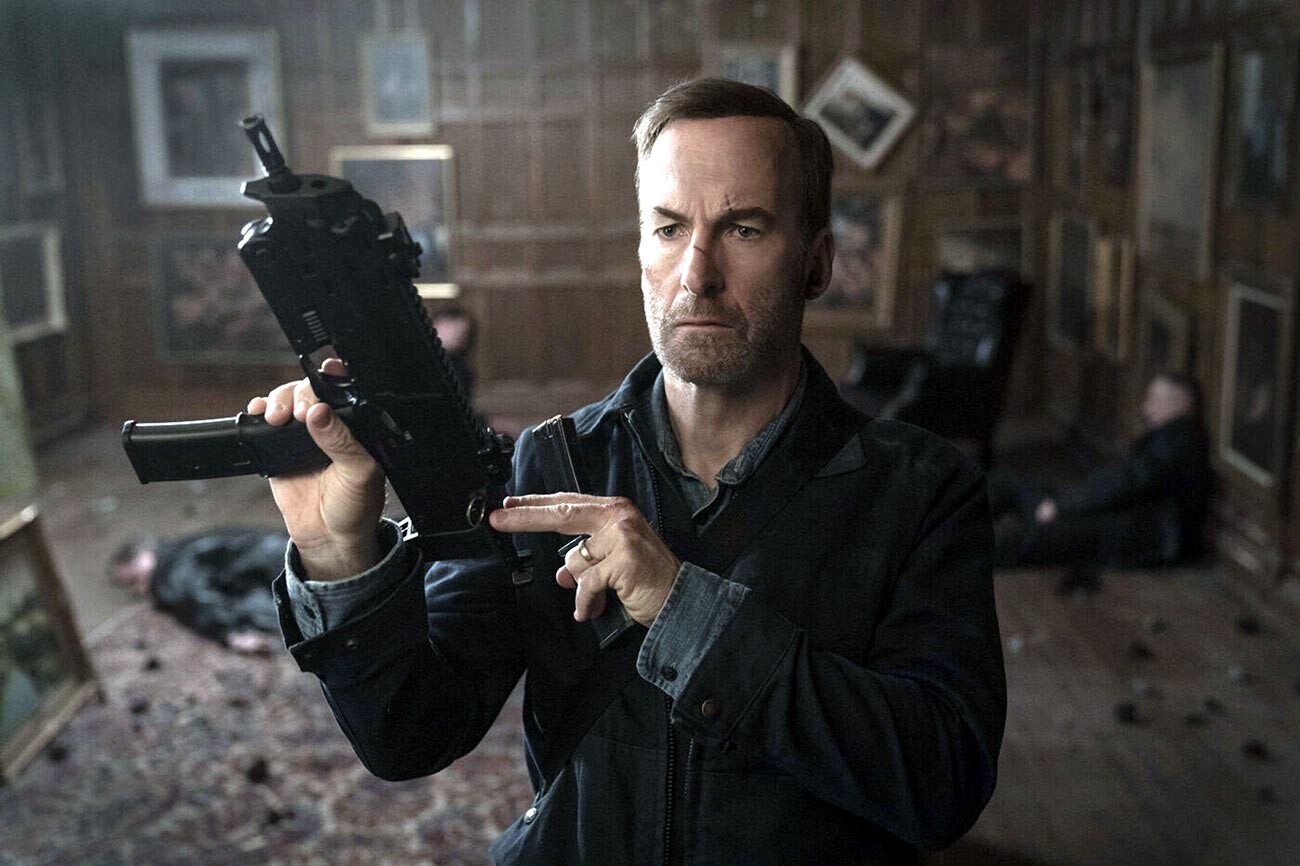
This comedy action flick starring Bob Odenkirk in the role of a desperate auditor with a dark past was directed by Russian director Ilya Naishuller. So, it’s no surprise that the bad guys are the Russian mafia, with mob boss Yulian guarding the Obshchak (a “common fund” of criminal groups), as its head, played by Aleksei Serebryakov (known for his role in ‘Leviathan’ (2014). The confrontation between the charismatic Odenkirk and Serebryakov, as well as Christopher Lloyd’s participation in the movie, attracted audiences from both sides of the pond.
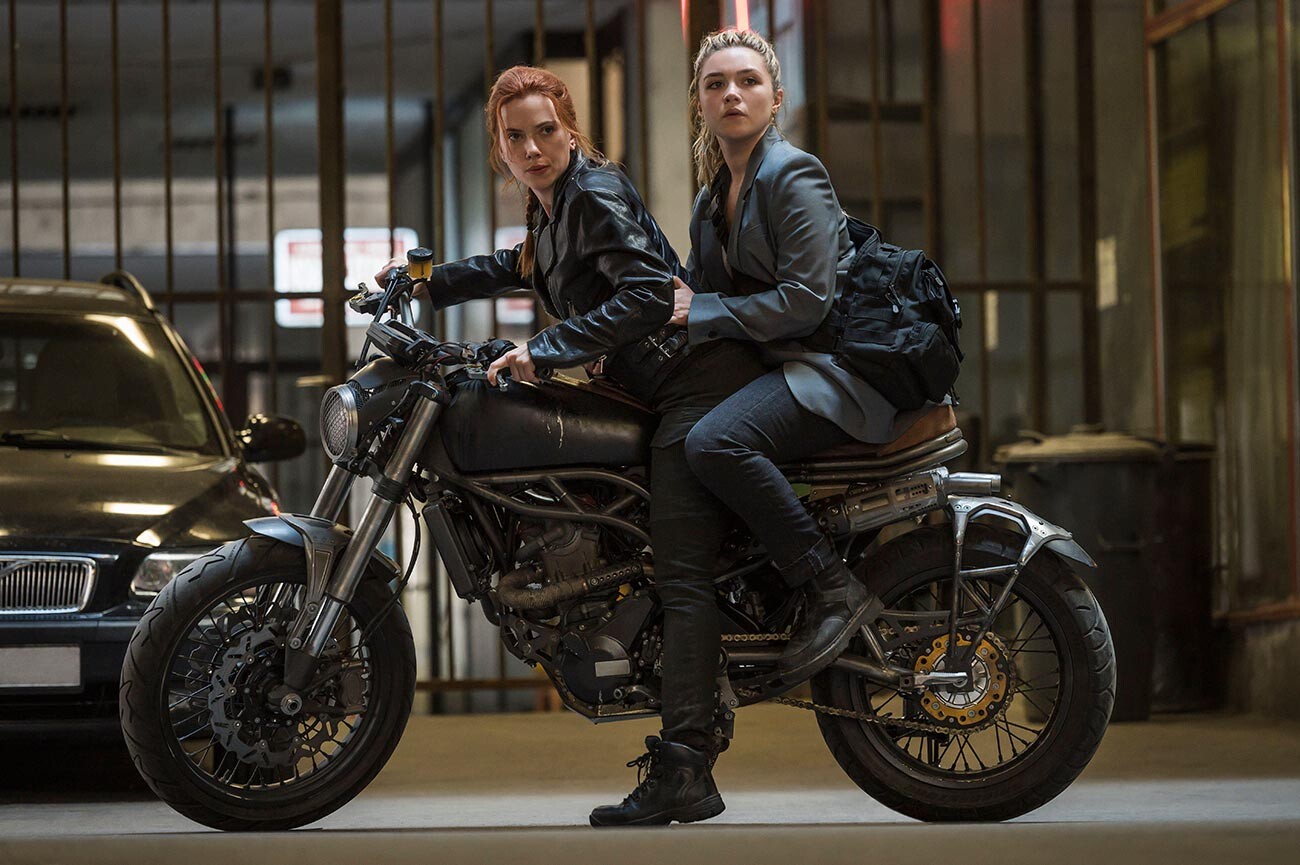
The origin story about Natasha Romanoff, the most mysterious woman in DC Comics’ ‘The Avengers’, was obviously impossible without her Soviet past. Natasha’s parents turn out to be Russian spies; at some point in the past, they sent their girl along with her sister Yelena to a secret base called the ‘Red Room’, where all future “widows” are trained. The organization existed in the present day, too, led by evil general Dreykov, who still wants to conquer the world. Natasha has to remember her family ties and, most importantly, her father that embodies all Russian stereotypes, from alcoholism to a full-back tattoo of Russian church onion domes.
Dear readers,
Our website and social media accounts are under threat of being restricted or banned, due to the current circumstances. So, to keep up with our latest content, simply do the following:
If using any of Russia Beyond's content, partly or in full, always provide an active hyperlink to the original material.
Subscribe
to our newsletter!
Get the week's best stories straight to your inbox